BLOG
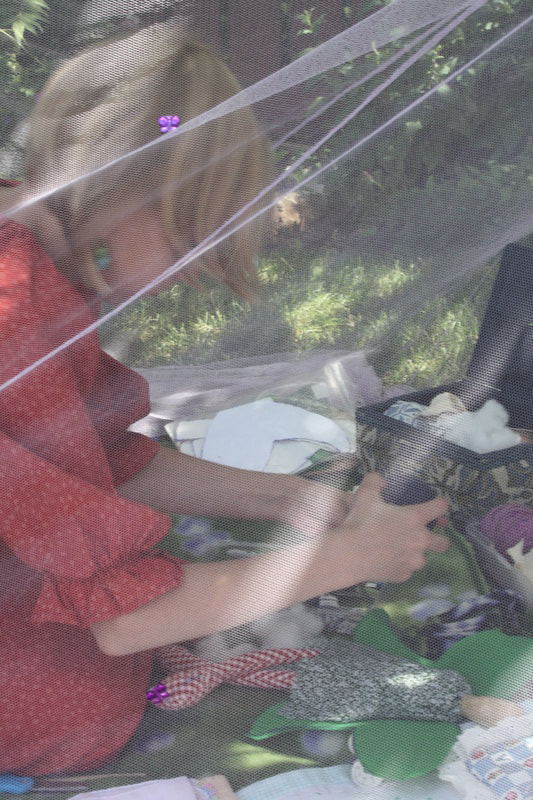 If you have ever looked at my About page, this photo is from when I was 10 years old. I was wearing my 'Prairie Dress' (made for me by my grandma and inspired by Little House on the Prairie. I lived in this dress for years) and sewing in the garden. If you look at the bottom, I was making one of my little dolls. This is one of the questions that I get the most when people find out that I am a seamstress. This and 'when did you start sewing?', both of which I will talk about in this post. A few days ago my mom found my old blog. This discovery has delighted me to no end. It's a great deal of fun to see how I started, as well as how I wrote when I was in middle school and running a little blog. Yes, I started writing a blog when I was in middle school. My original blog was called 'Kate and Kompany', and it was about the little art dolls that I started sewing when I was seven. Along with that, I post bits about making little clay dolls (of which I still have a few) and playing around with scrapbooking. Each of my art dolls were made with scraps of mostly quilting cottons that I was given by my grandma's and anyone else who sewed that we knew. They also had names and little stories to go along with them. I think that was the part that I enjoyed the most - I have always enjoyed finding interesting names and writing little stories. All of the dolls are inspired by history (not much has changed, hey?), and some of them are mermaids and faeries. I started writing the blog in 2011, when I was 11 years old. It doesn't have tons of posts, but I did keep it up for 3 years! The pattern for the actual doll bodies was from a wreath, interestingly enough. It was a fall wreath pattern, if I remember correctly, that had a little witch or something attached to it (kind of like this pattern). My mom would make the body and legs for my on the sewing machine, since I wasn't comfortable on the machine yet, and I would do everything else. I enjoyed it immensely, and this is how I spent a lot of my spare time. I also sold some of these dolls to people around Airdrie (as you can see, Airdrie is a very supportive city). It's always fun to look through the things that I've sewn to see how much I've learnt, even just over a few months. Seeing this, with the very beginning of my sewing was so fun for me. If you would like to check out my middle school blog, it's still up here. Enjoy the ramblings of a 12 year old me!
~K
1 Comment
We made it! This is my last details post of my eco couture collection that I designed, drafted, and sewed for the Future Oceans Fashion Show that was held in Victoria, BC on Canada Day (anyone sick of hearing about this event yet?). If you want to read and see more about the event and the other garments that I created for it, you can check it out here. For the sake of not repeating myself a million times and making each post longer than necessary, I'm going to assume that you know about Future Oceans and go straight into talking about the last two garments in my little collection. The first dress I'm going to talk about today is the first dress that I actually created for the show. I designed all of the dresses in the winter, but I didn't start patterning or sewing any of them until May. I'm not sure if I was procrastinating or if my reasoning is solid, but I chose to avoid creating any patterns until I got the fabric in. I bought my fabric from a sustainable material brand that is run out of Canada, but it still took a bit for the fabric to arrive. It was insanely exciting when it did come in, and I was hit with lots of inspiration to pattern draft after I saw it. The 1960's dress was an easy pattern to make, which is why I started with it. I wanted to ease myself in a bit, and this was a great way to do it. It was also pretty simple to sew, since it's such a simple silhouette. This dress is made out of organic cotton sateen (for the yoke. This is the same sateen I made the 1940's dress out of) with a sustainable linen. This linen is so floaty and wonderful to prance around in. The entire dress is lined, and it features pockets hidden in the side seams. The linen is hand stamped, like almost all of the other garments in my collection. I was inspired by trapeze dresses from the 1960's. It was an added bonus that this shape of dress is very easy to fit to different shapes and sizes, so it was very easy to find models to fit it for the show and the photoshoot the next day. I used to hate 1970's fashion. I can now admit that I absolutely love it now. Blame Wes Anderson. Opposite of the 1960's dress, this is actually the last dress that I made for the show, and it was designed about 5 minutes before I made the pattern for it. The original collection was supposed to start at the 1930's and go to the 1960's, so this dress and the 1920's one were last minute additions when I realized that I had extra time and material on my hands. This dress was quick, dirty, and fun to make. The drafting of the pattern was relatively easy and so was putting it together. Printing the pattern on it was tons of fun as well since I got my mom to make me a special stamp for it (my mom is the one who creates all of the stamps that I use to print my fabrics). The pattern is paisley and turtles in a coral on blue cotton gauze. I loved working with the fabric when I used it for the 1950's dress, and it takes fabric ink really nicely. When I thought about making a dress inspired by the 1970's I was torn between making a maxi or a mini dress. The choice was made purely out of convenience in the end - I wanted it to have puffy sleeves, and if I wanted enough fabric to make that it had to be a mini. I had so much fun making this dress, and I'm thrilled with how it turned out. Both of these dresses are currently for sale at the Future Oceans Boutique at the Victoria Bay Center and online at the Future Oceans website! You can order either one of these dresses or a skirt (check them out here) and get it made to your measurements! Thank you for your support!
~K Last week I focused on two pieces that are a part of my eco couture collection for Future Oceans. If you want to read more about Future Oceans (the fashion show, the garments I made for it, or some of the process while I was preparing for it) you can see more here. This week I wanted to look at some of the detail and design process for the dresses that I made that were inspired by some of the best decades in fashion - the 40's and 50's. I have always loved the fashion of the 40's, and I've already made quite a few pieces inspired by the era. The thought process behind this dress included much more than just what design elements I liked from the era though, since I had to take into account what type of fabrics were available for me to use, how much time I had to make it, and what kind of shape would be the most convenient to make when I wasn't sure who was going to be wearing it. One of the most difficult aspects of designing and making garments for fashion shows is not knowing who exactly is going to be wearing them. Quite a few of the pieces that I chose to make for fashion shows have been designed to be more suitable for many different shapes, and sometimes sizes. This dress was one of the later pieces that I added, meaning that it got tacked on after I finished most of the other ones. I had some time and the material to make something else. Originally, I wasn't sure if we would have time to show it in the actual fashion show, so it was a backup that I might have worn behind stage. We did end up having the time for it, and I'm so glad because I was thrilled with how it turned out. This dress is made using an organic cotton sateen with a tiny bit of stretch to it. Having that stretch made it much easier to fit to multiple different models for the show and the photoshoot the next day. I chose not to have sleeves in the design, since sleeves can restrict who can wear it and make the sewing process much longer. I adore the apron style dresses of the 40's, so I based my idea off of those. I simplified the idea a bit, and I love how it looks. The cotton sateen has a gorgeous sheen to it, and I'm glad that I didn't add any of the ruffles that are often on 1940's apron dresses. It's finished with buttons on the crossover back and top stitching. The fourth dress was the first one that I designed way back in January. This is a 1950's inspired summer dress with a front button closure and a tiered skirt. I made a dress that had a bit of a similar style for my Summer 2018 collection that I got photos of in Drumheller (see photos here), and I thought that it was so flattering that I wanted to use that silhouette again. This dress is sleeveless for ease of fitting, has darts and gathering to shape the bodice, and has a fully lined bodice. The hem is hand printed in coral to tie it in to the colour scheme that the rest of the collection has. The silhouette of the 1950's is absolutely iconic, and so flattering to pretty much every single shape and size. I wanted that, but I also wanted my design to be a little bit different from the classic shape that most think of when they think of the 50's. I also wanted this to be the sort of summer dress that was comfortable and easy to wear. I used an organic cotton gauze for the dress, and the fabric was an absolute dream to work with. It ironed great and is soft on the skin. The dress is finished with hand made clay buttons. I was so spoiled in Victoria for the fashion show and all of my pieces were photographed by professional photographers the day after the show. If you want to see some of those, check out my instagram here. I will also be posting some of them here once I compile enough of them. Next week will be my last details post of the 1960's and 1970's dresses from my eco couture line. Stay tuned! ~K
As I promised last week, here is the first detailed post about my eco couture collection for the Future Oceans fashion show that took place in Victoria, BC on July 1st. If you haven't heard about this before, or would like to learn more about the Future Oceans Fashion Show, you can see my other posts about it here. The first garment that I designed for the collection is inspired by the 1920's (which is one of my favourite decades of style). This dress is a drop waisted gown with a deep V back, knee-length handkerchief skirt, and bloused top. The side panels in the skirt are hand printed by me on a TENCEL twill, which is a sustainable material that I got locally, through a Canadian company. The waistband is an organic cotton sateen. This entire dress is lined and is finished with top stitching. I've always enjoyed the aesthetic of the 1920's, but the shape can be difficult to get and make it look nice. The drop waist style can be really unflattering on a lot of shapes, depending on how it's being accomplished. I spent a lot of time on pinterest looking through extant garments from the era, as well as some modern interpretations of them (from movies and tv shows like Peaky Blinders and The Great Gatsby). None of the garments in this collection are meant to be exact replica's of dresses from each era, but more to harken to each decade. Some of my favourite dresses from the 20's have low backs, so I wanted to make sure to include that in my design. I also love the extra panels that flare out when the wearer is walking. The TENCEL twill has a beautiful drape to it, so I used it for both the 1920's and the 1930's inspired gowns. The second dress is inspired by the 1930's. This dress has a boat neckline with a deep V back, wide waistband, pleated over skirt, and thin belt. It's entirely made out of the TENCEL twill, so the whole thing is soft and has a wonderful drape to it. All of the peach sections are hand printed by me. Drafting the pattern for this dress was a fun challenge, as was figuring out how to put it together while also making sure that all of the edges were nicely finished. It took me the better part of an afternoon to draft the entire pattern, and I'm pleased with how it turned out in the end. The bodice is fully lined. The shaping in the bodice is created from two pleats at the waist on the front, and the back pieces are gathered and meet at the waistband to create a deep V. The under skirt is just a regular straight skirt, similar to what a skirt sloper would look like. I ended up just draping the over skirt instead of patterning it so that I could get as much fullness as I wanted. The hem is shaped to be longer at the back. I loved designing these garments, as well as all of the other ones in the collection. Next week I will focus on the dresses styled like the 1940's and 50's!
~K |
EtsyArchives
April 2020
Categories
All
|
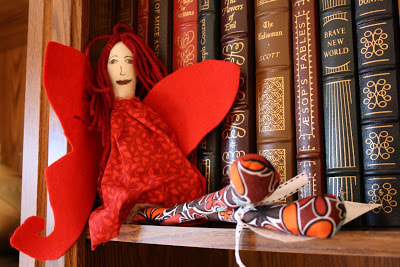
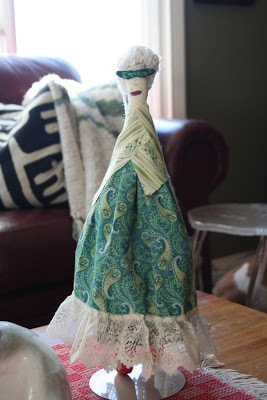
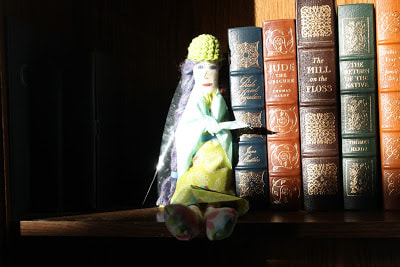
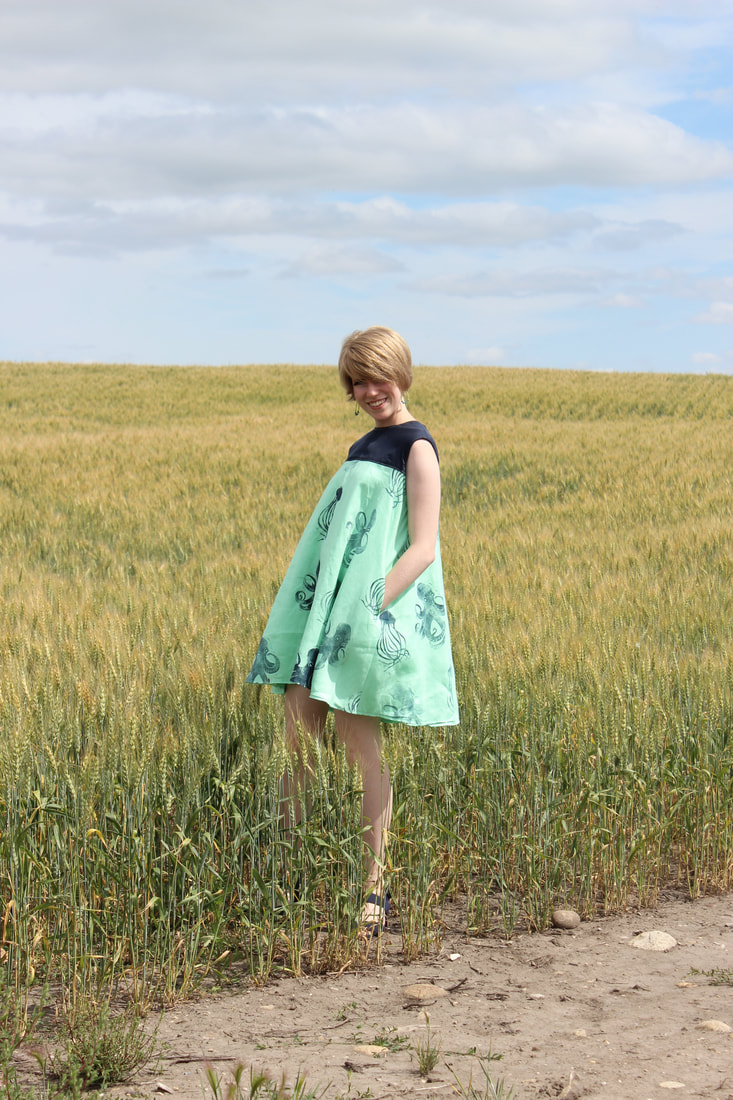

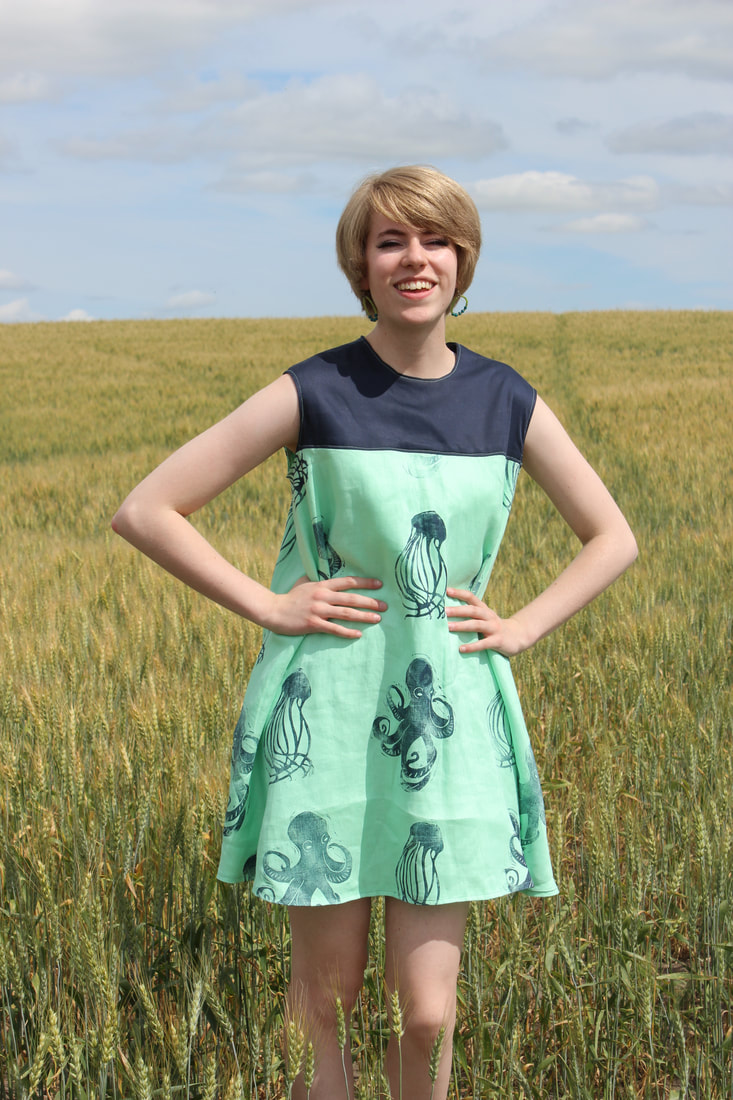
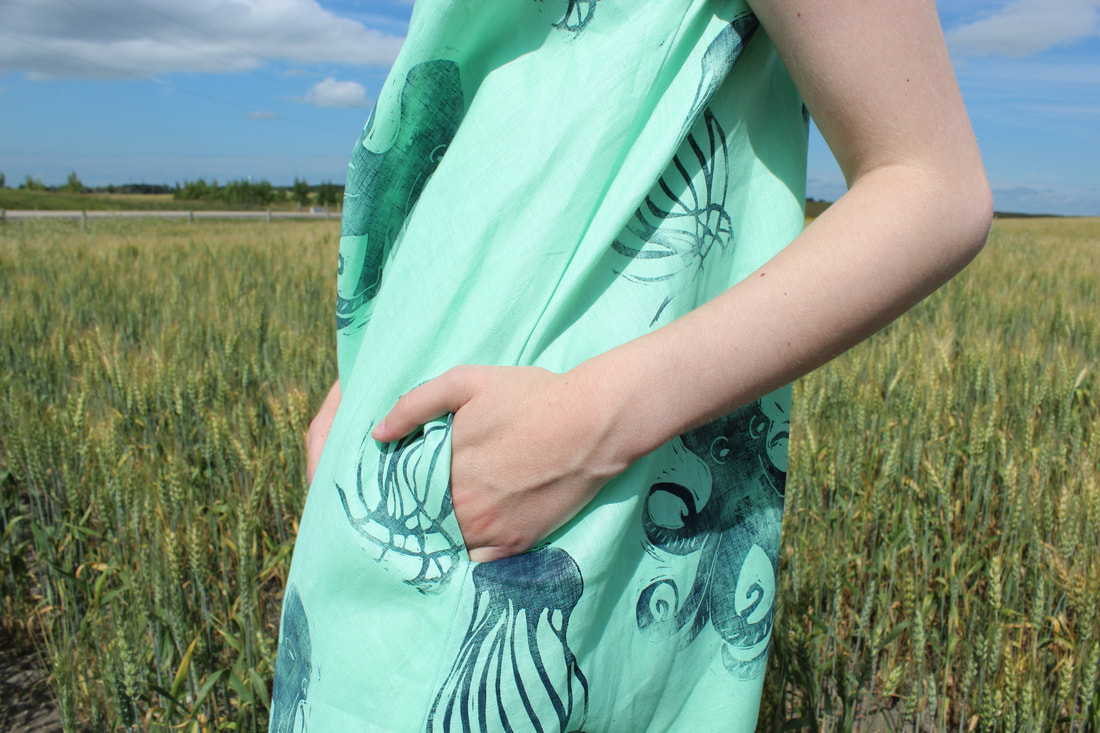
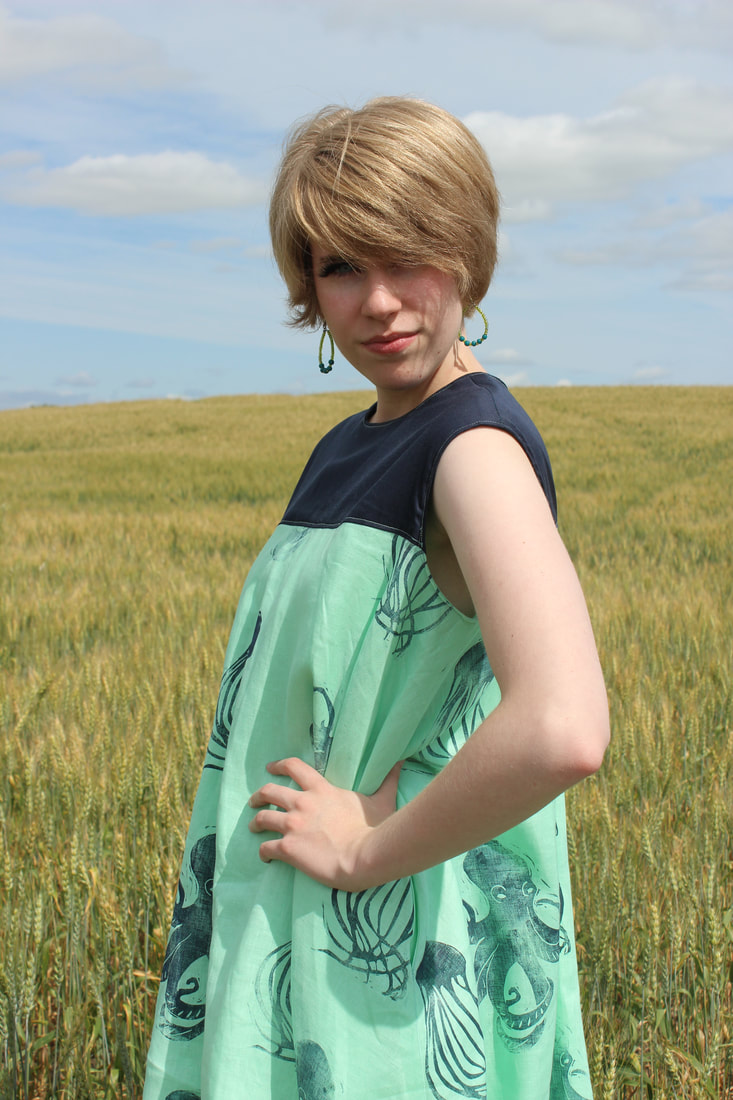
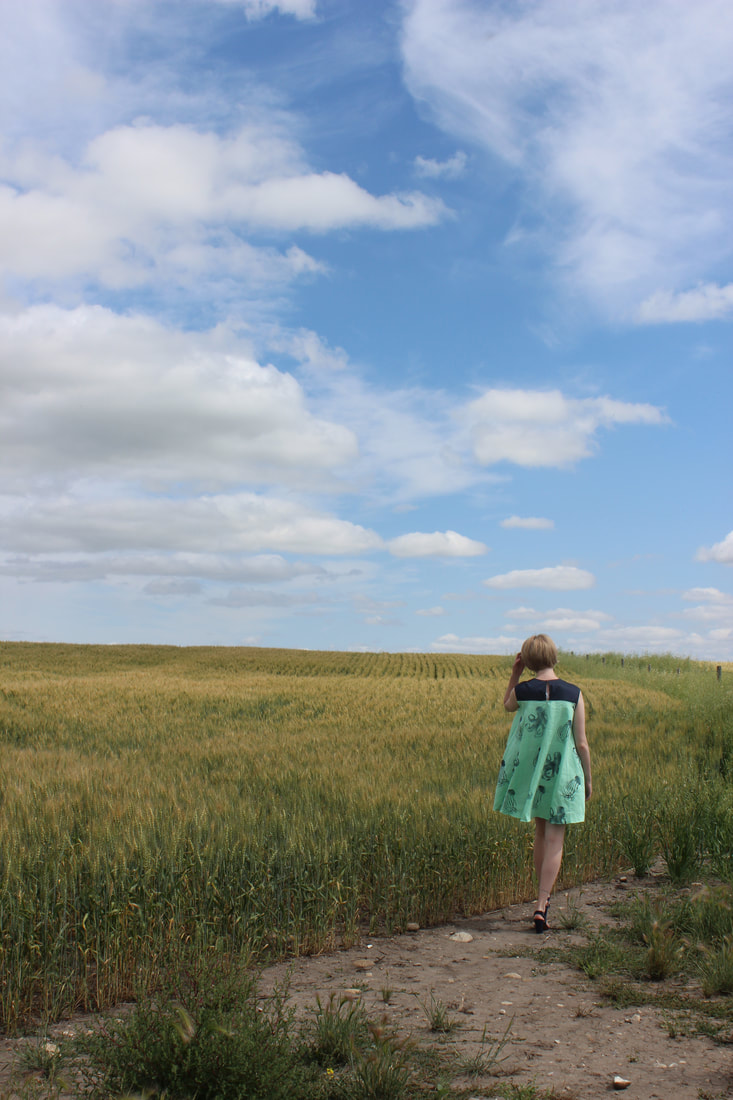
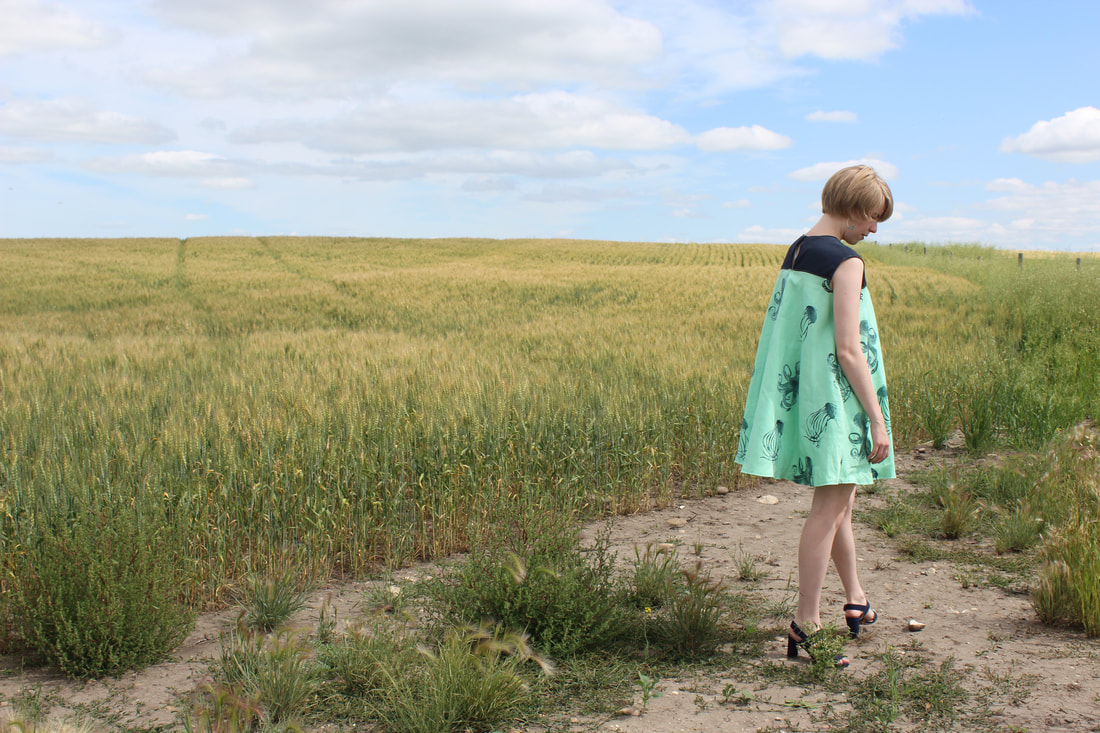
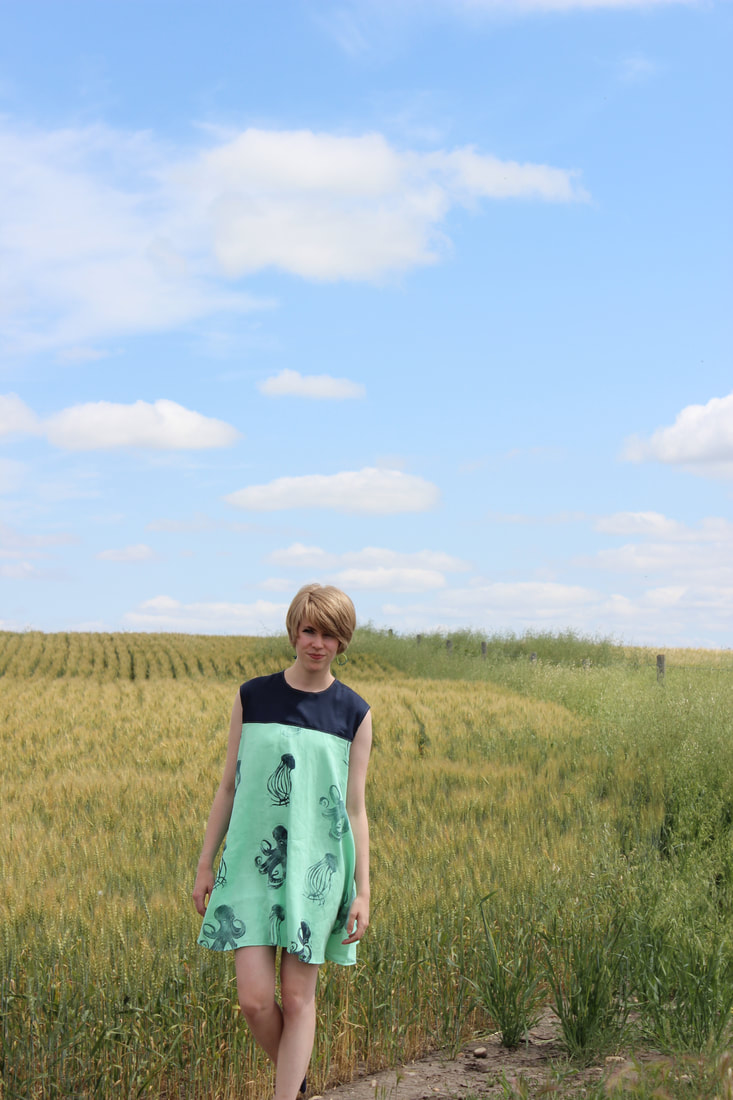
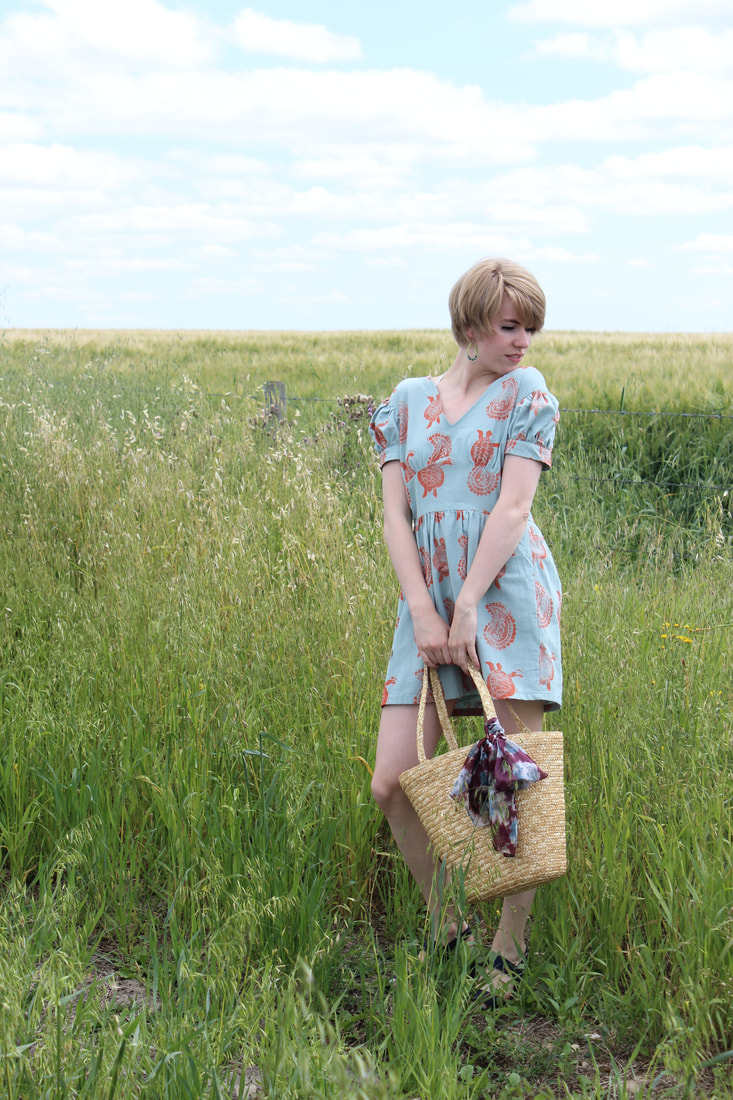
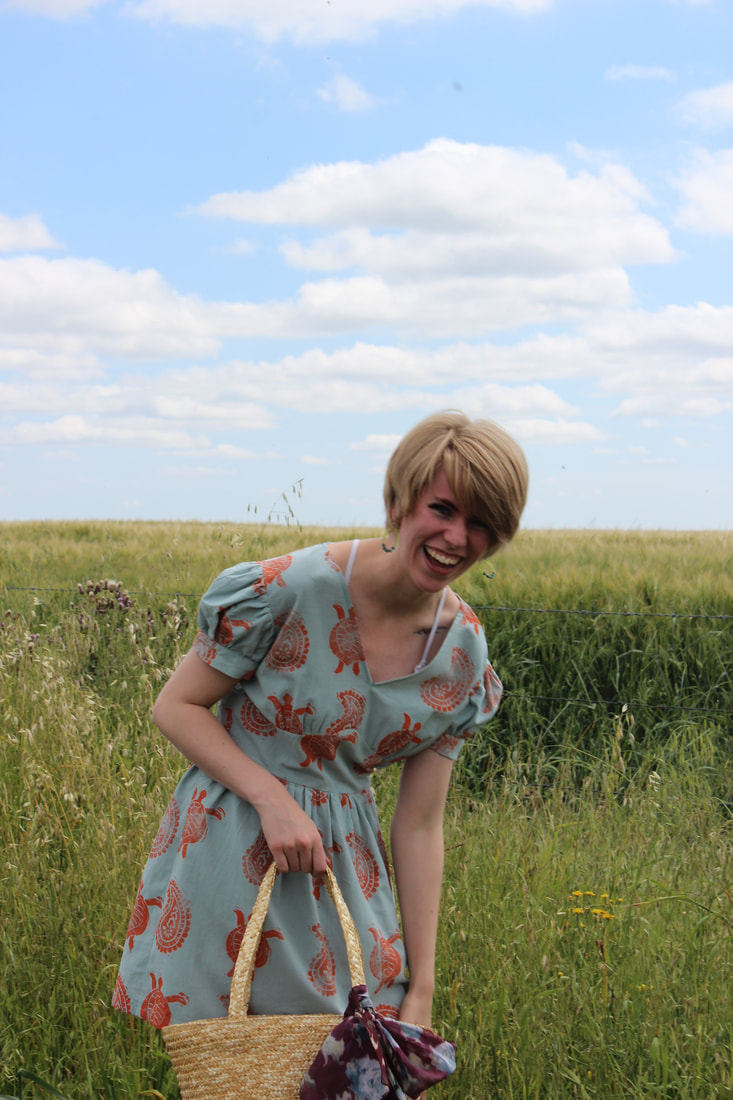
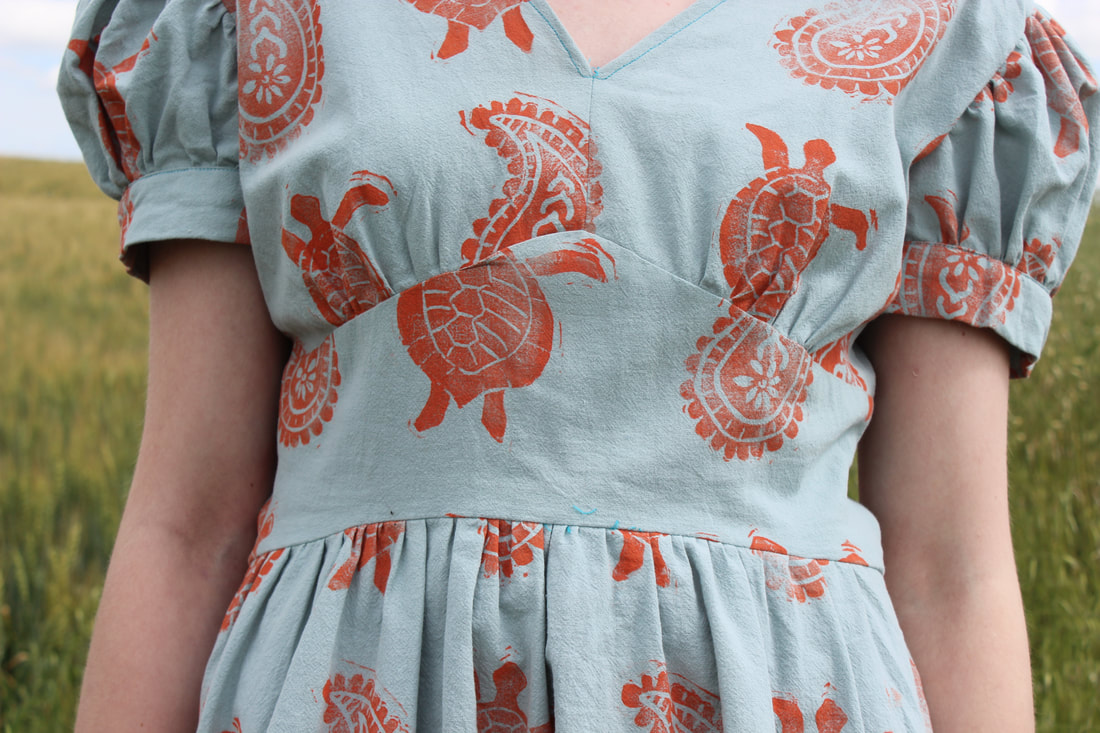

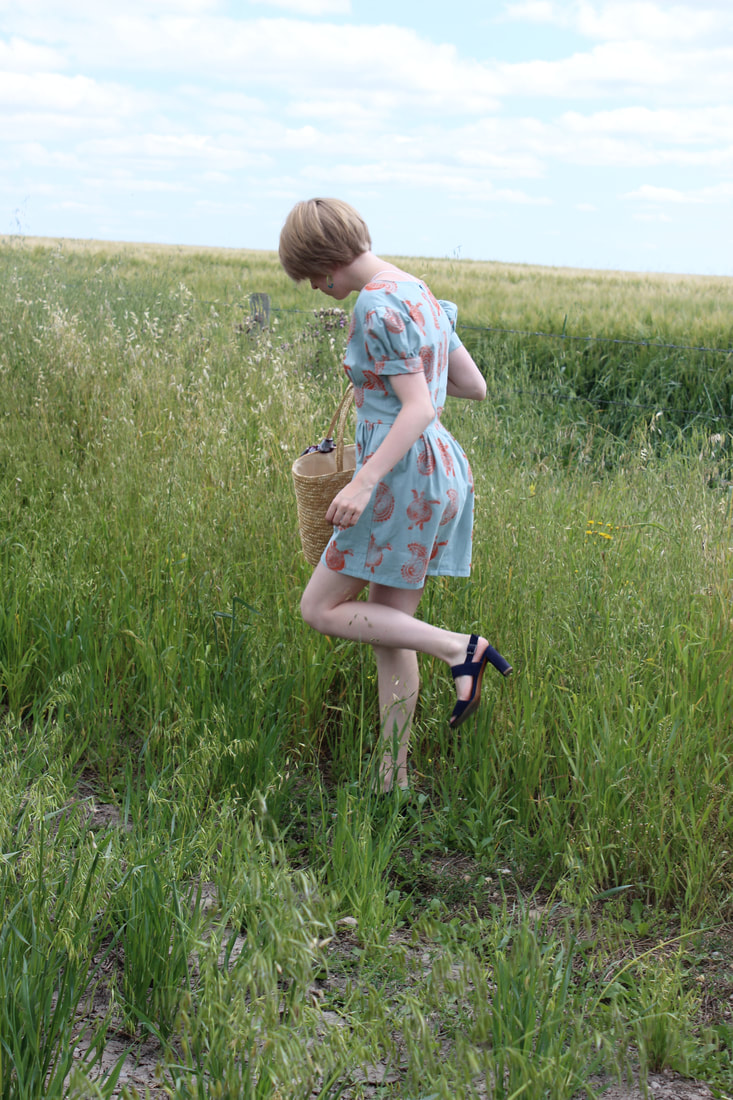
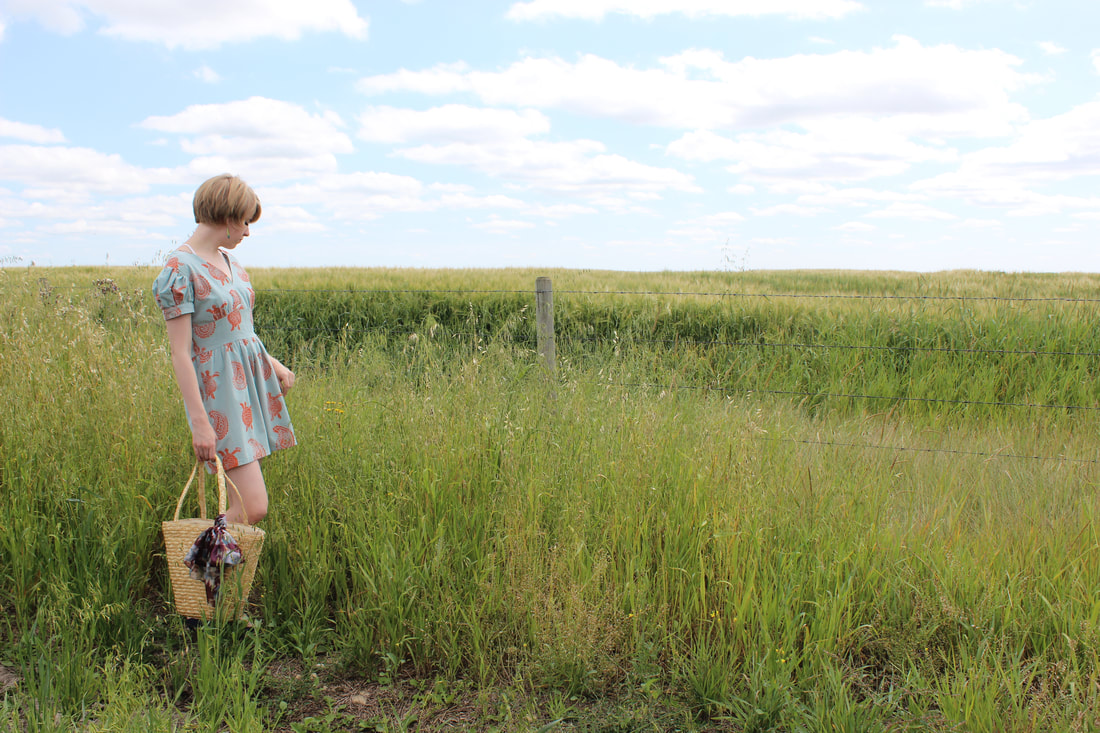
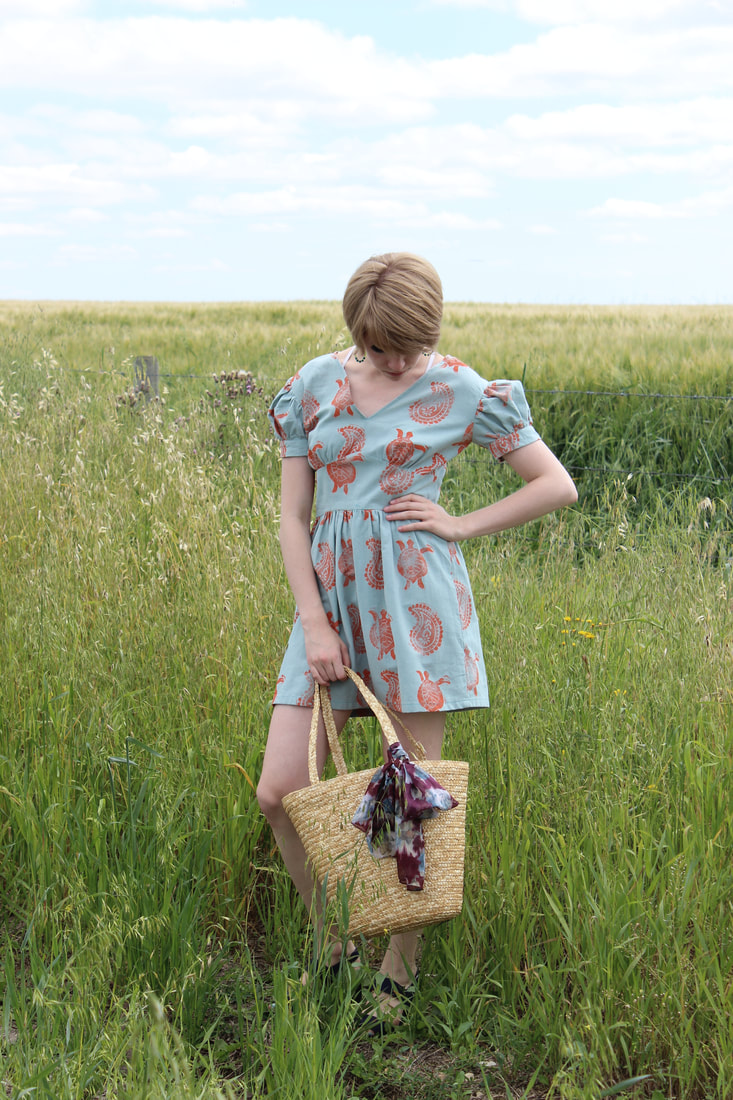
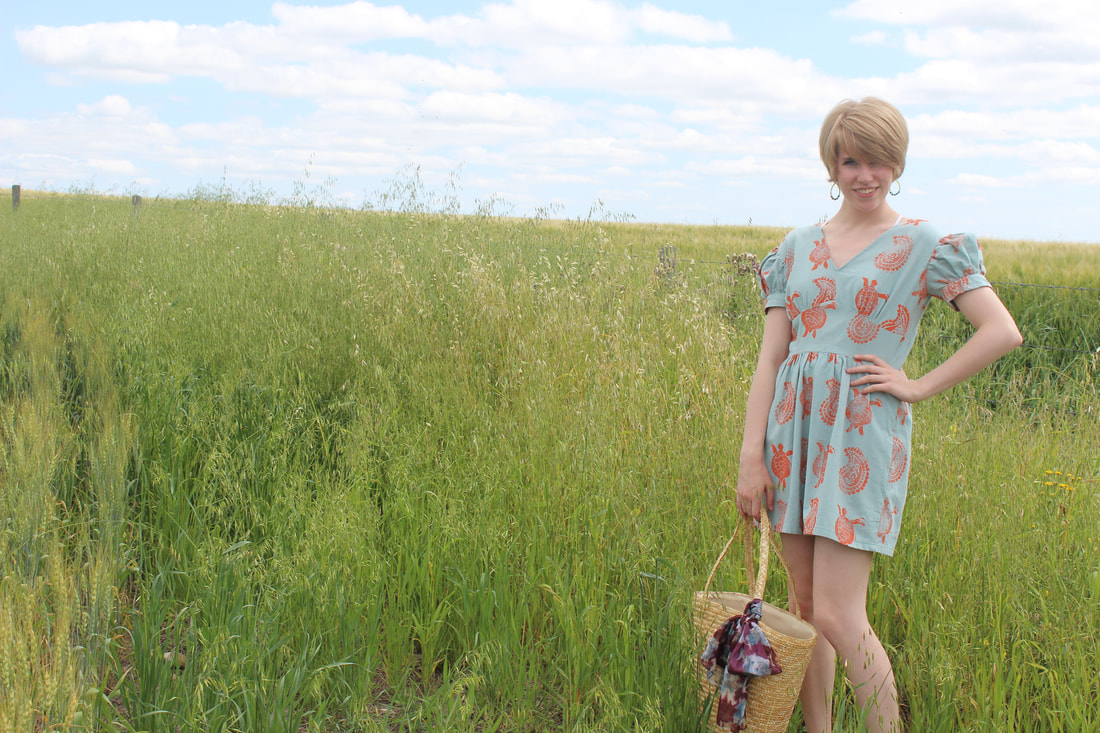
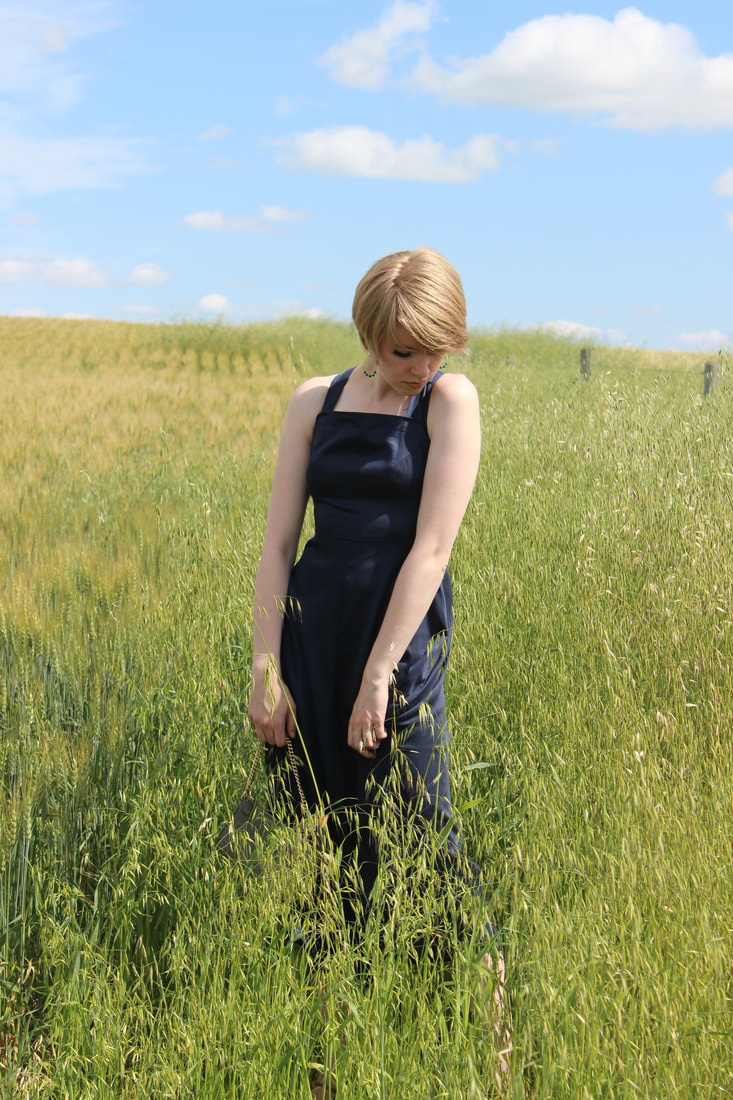
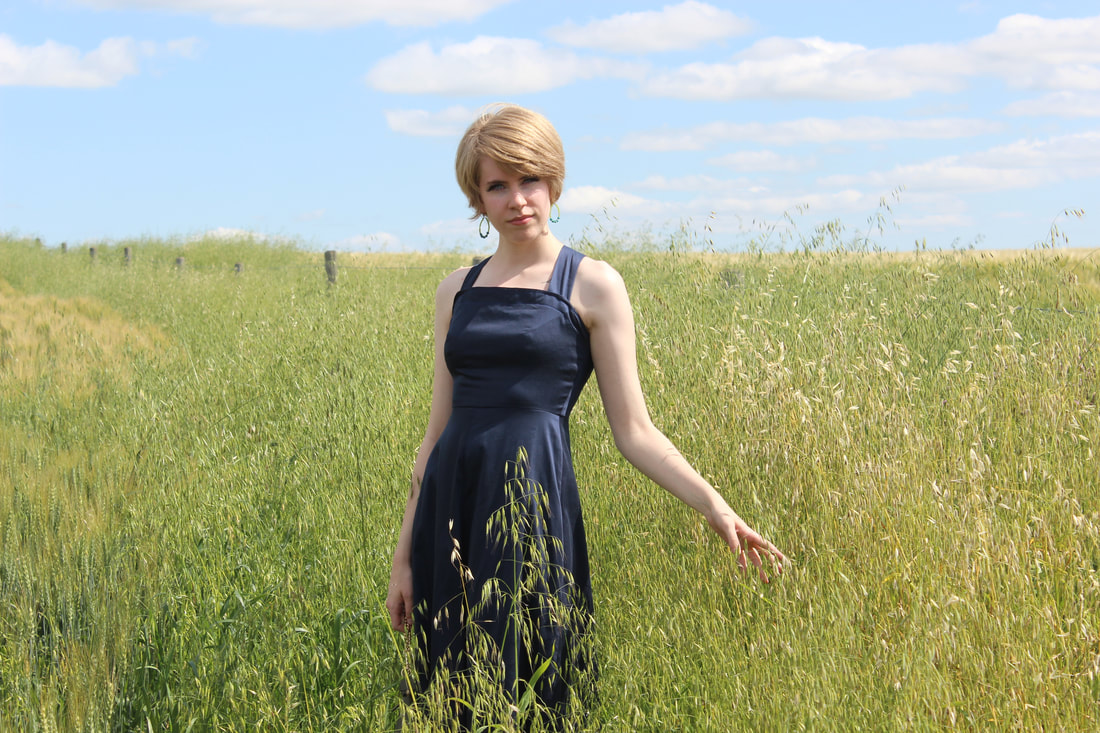
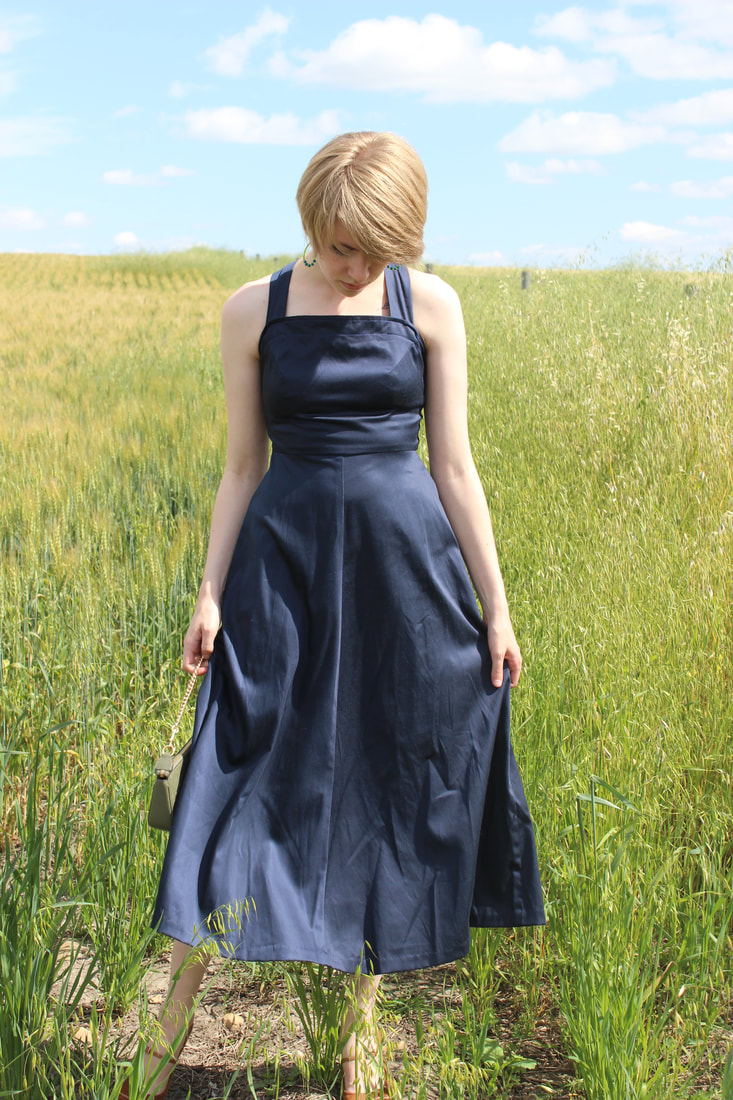
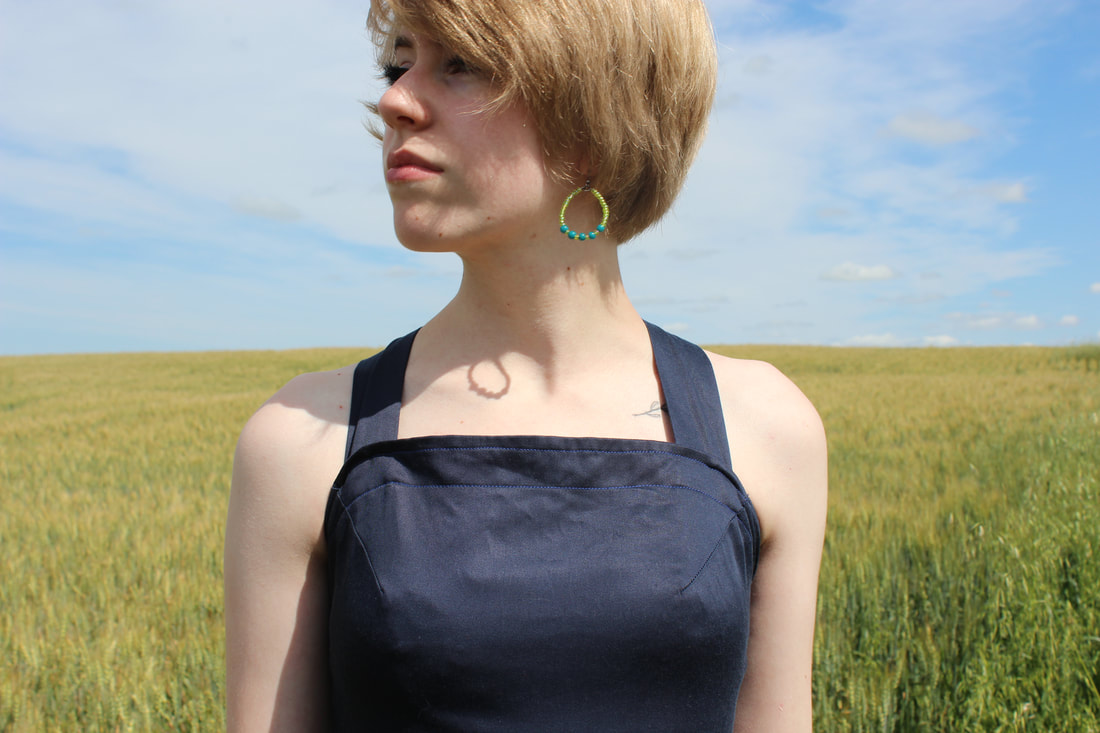
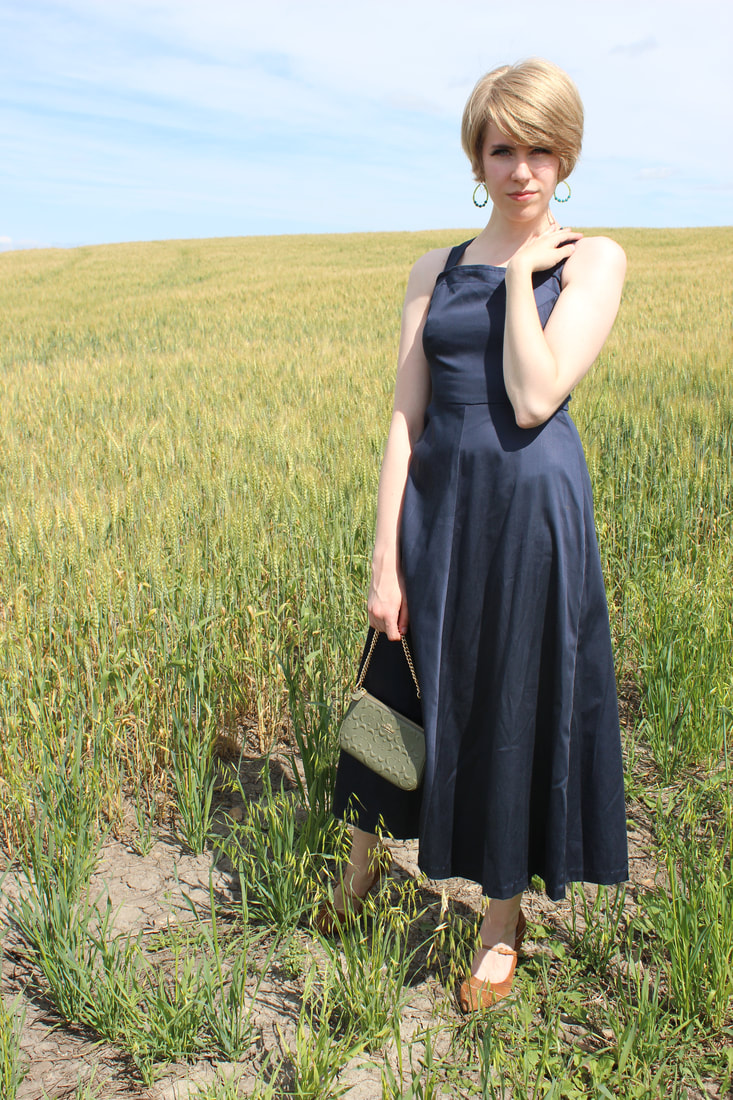
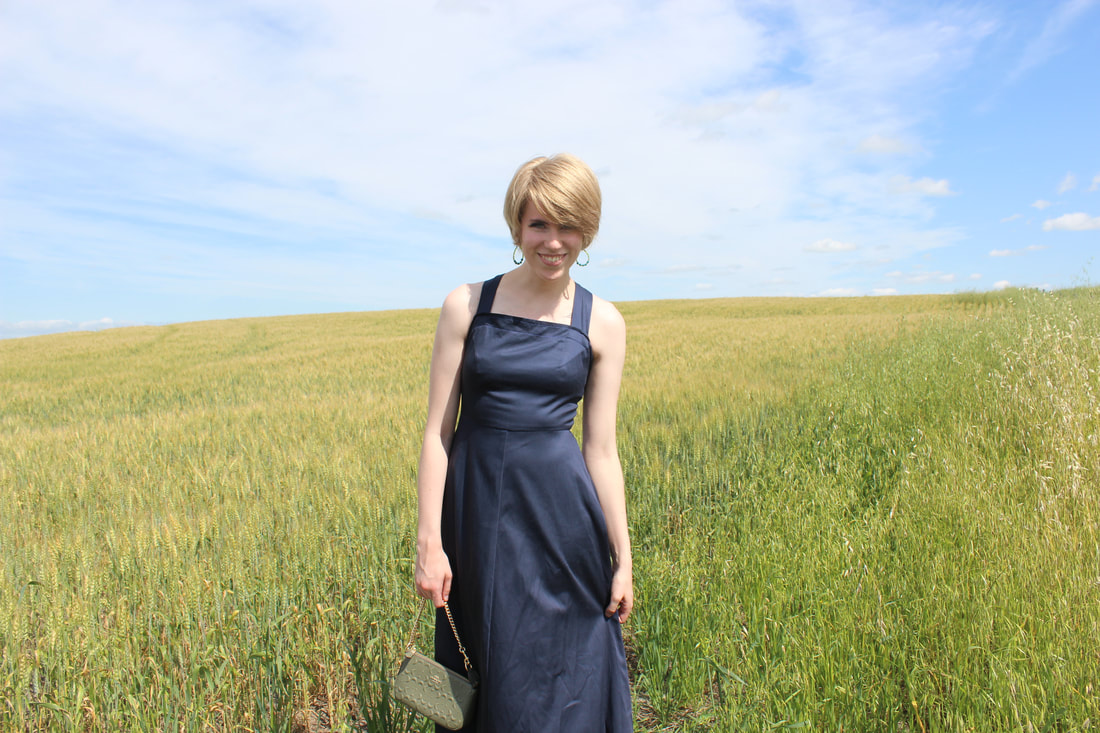
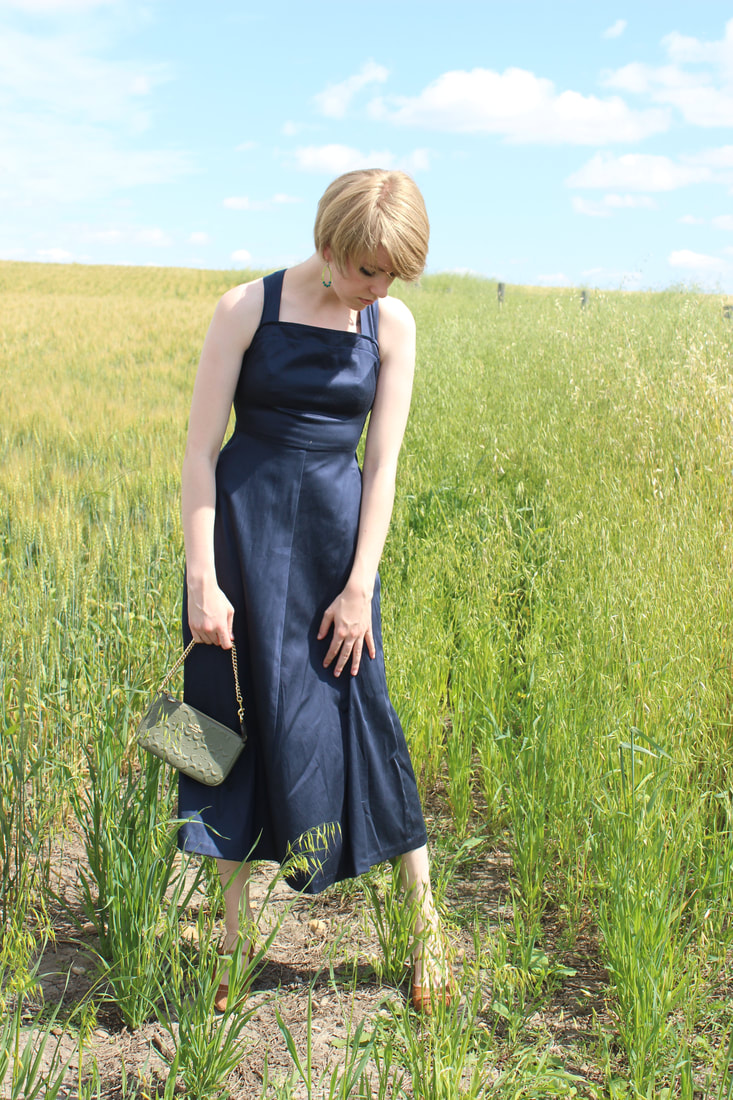
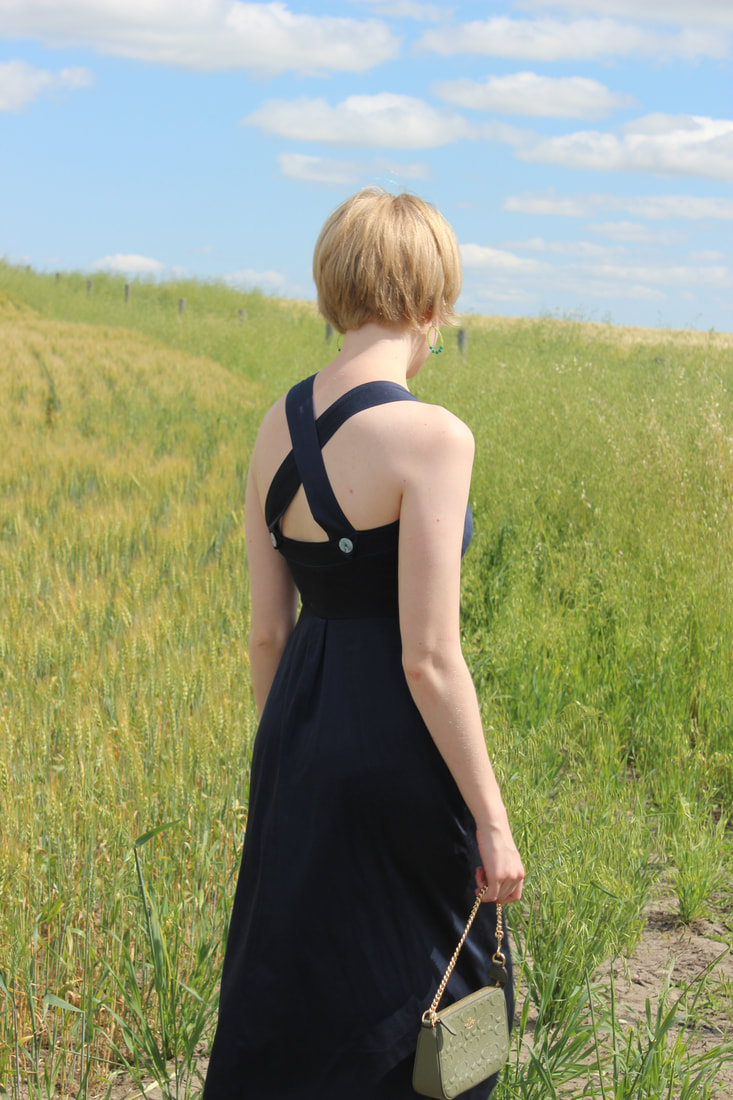
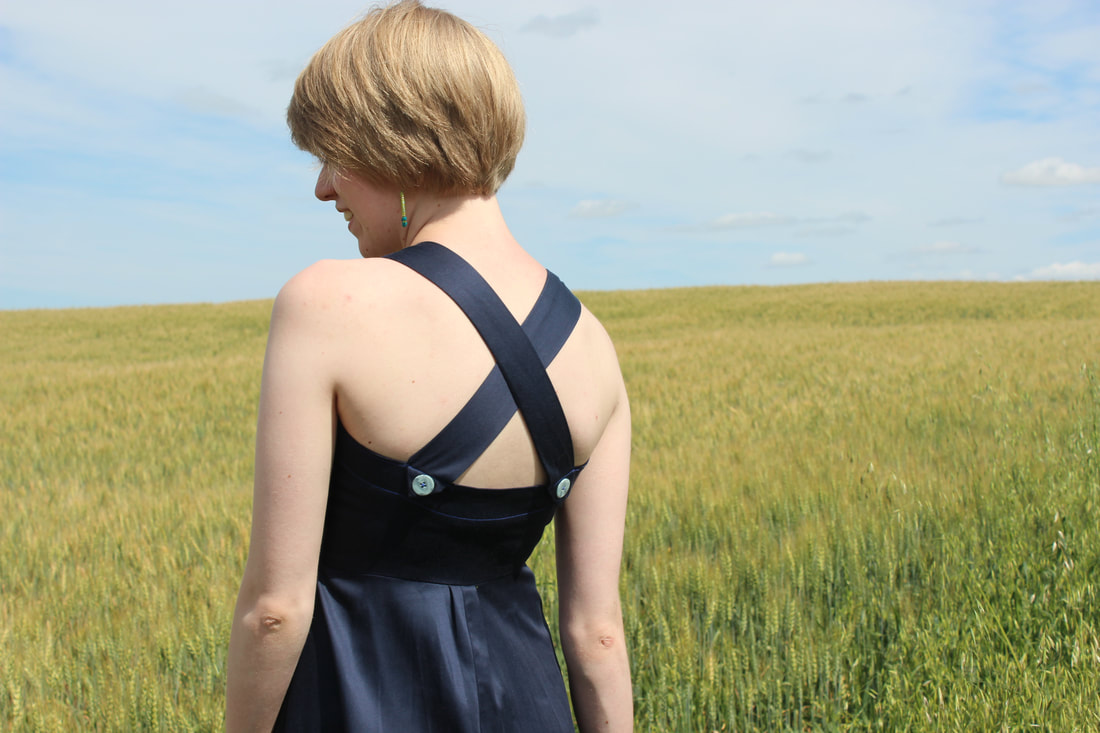
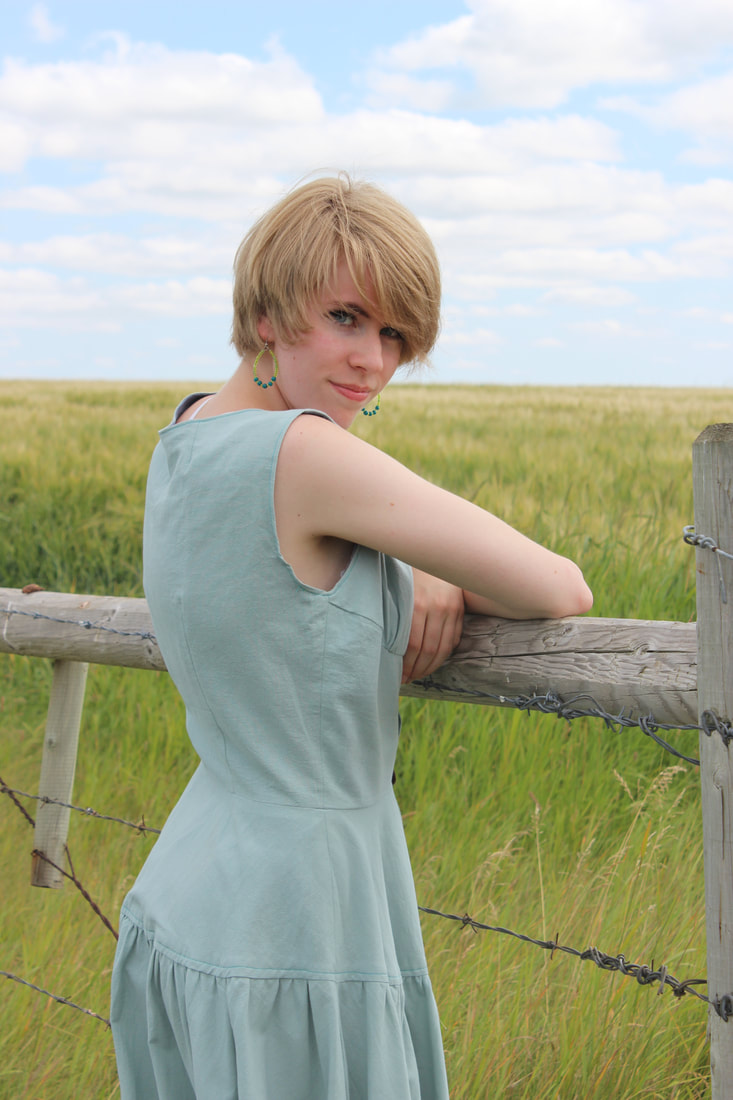
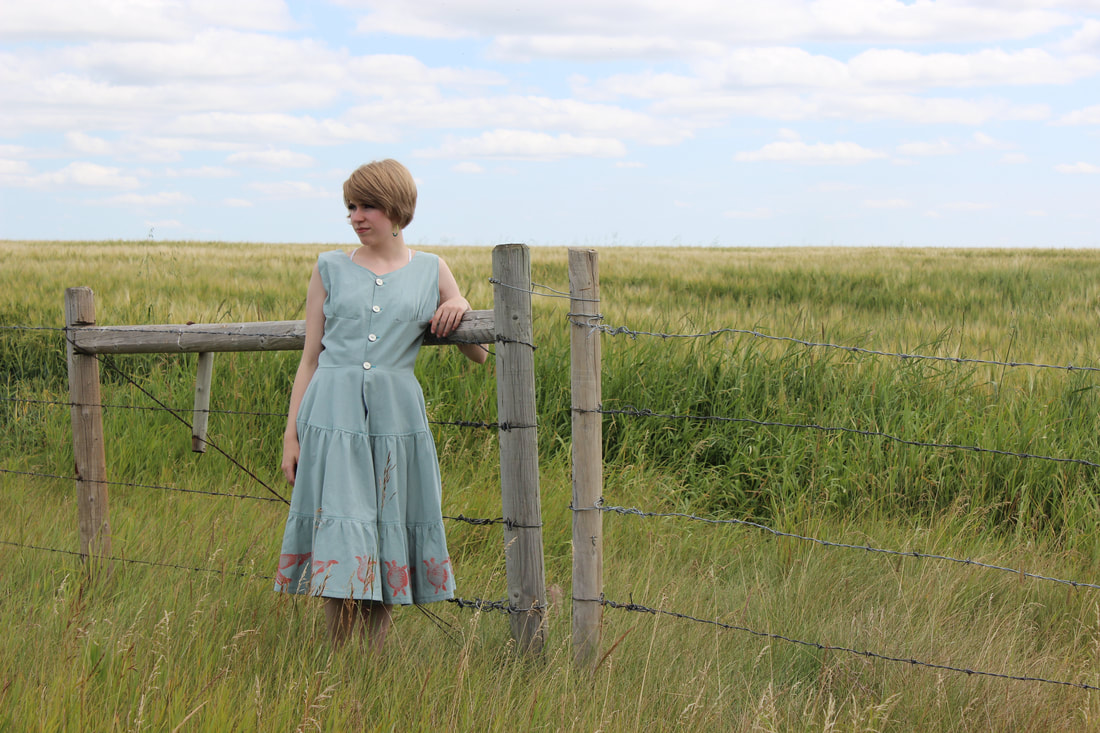
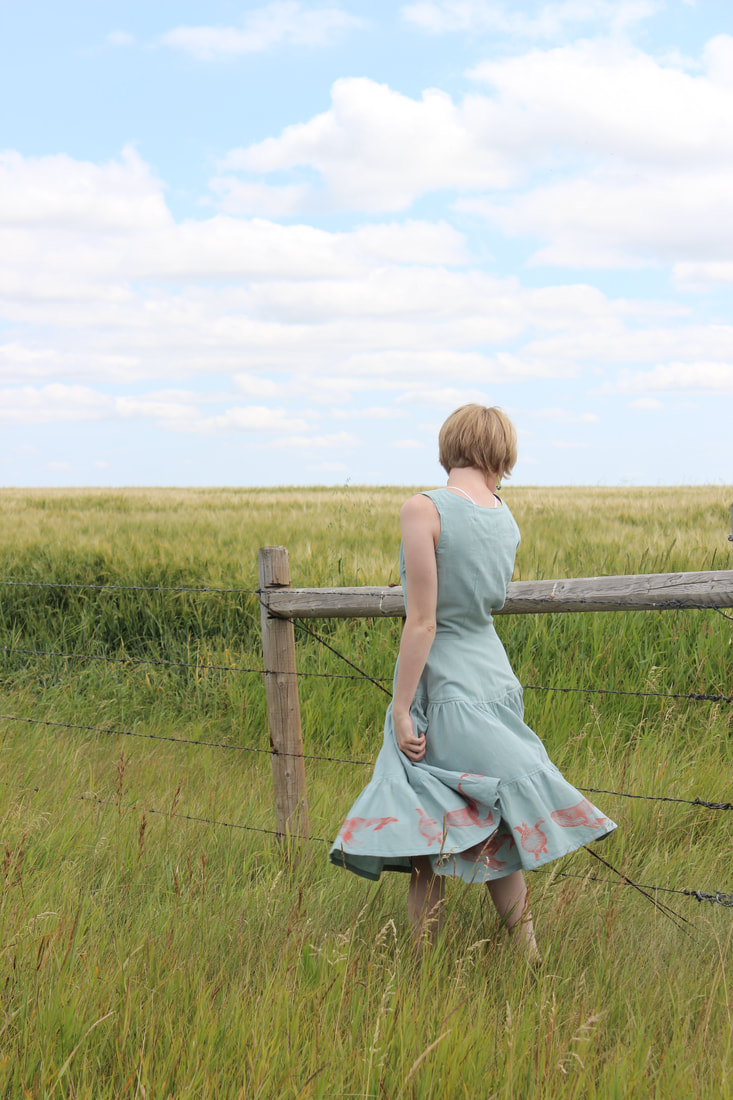
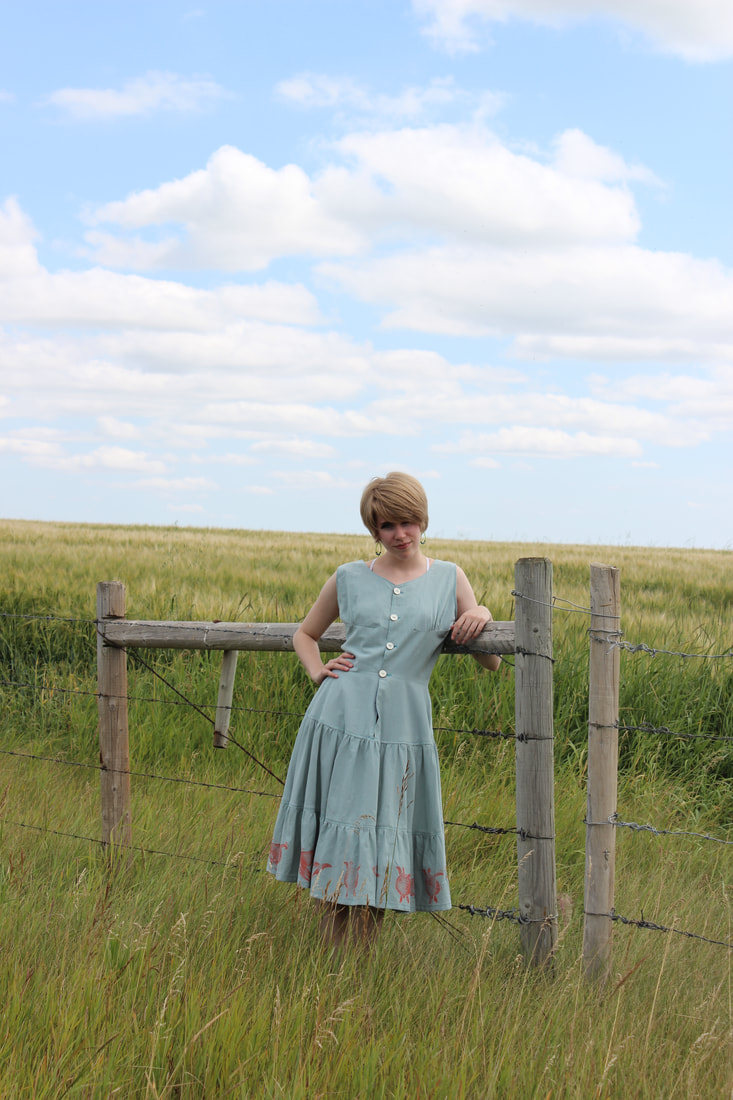
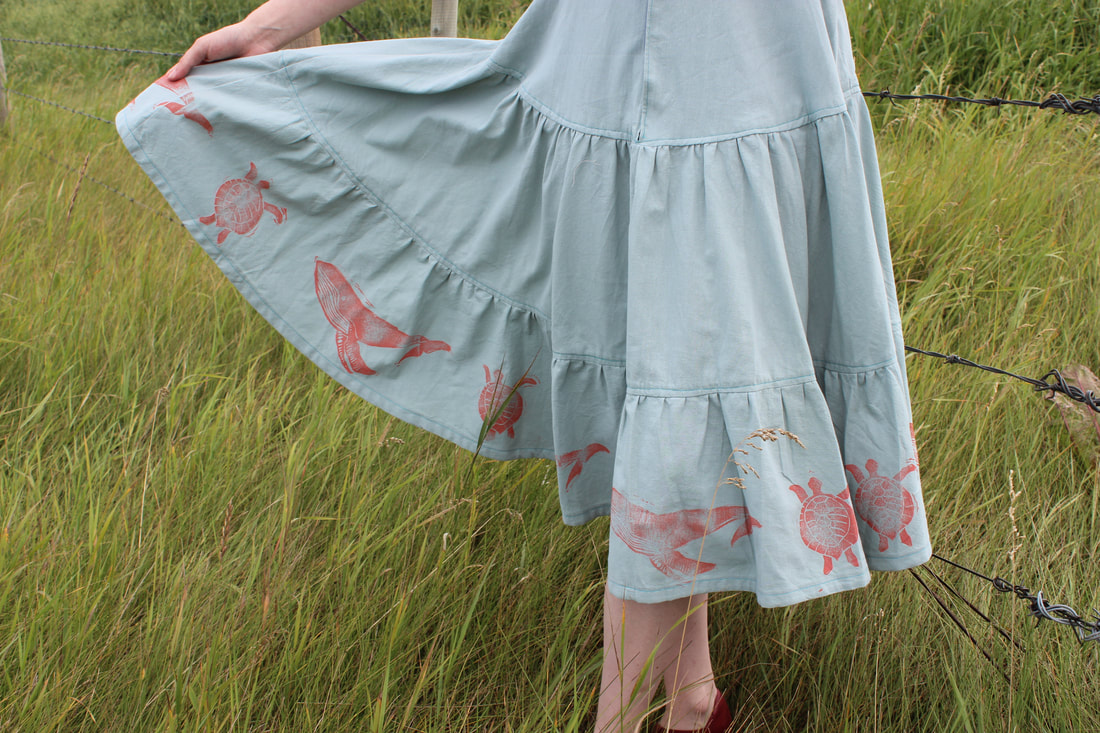
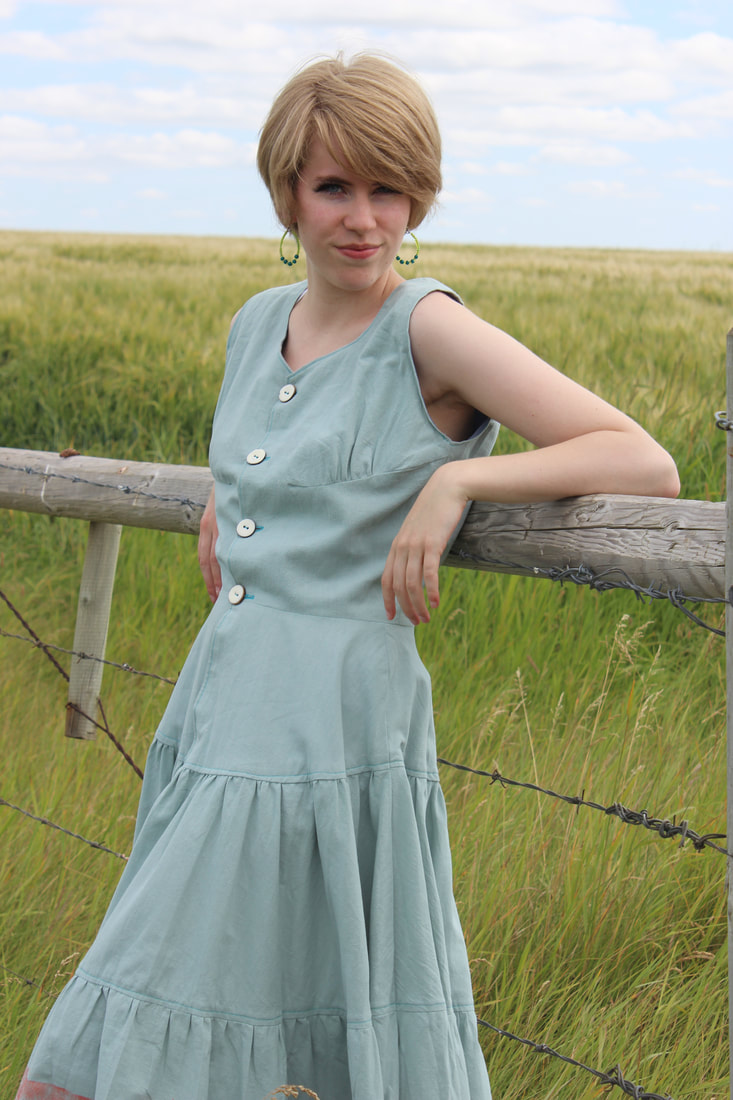
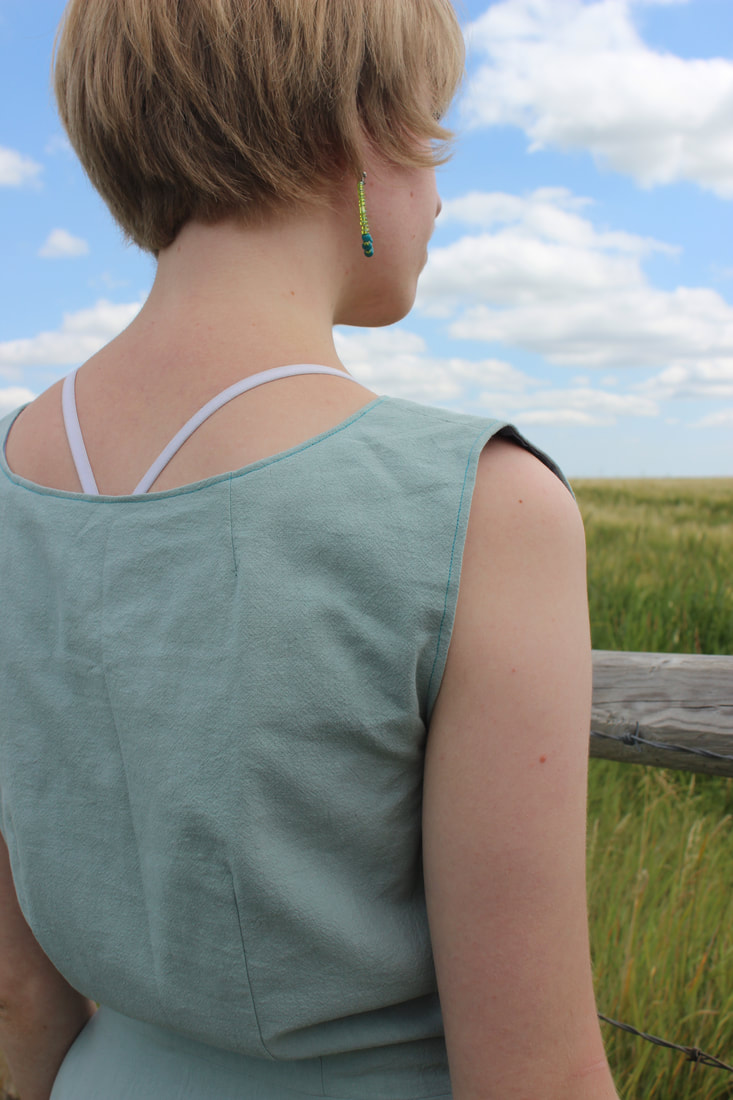
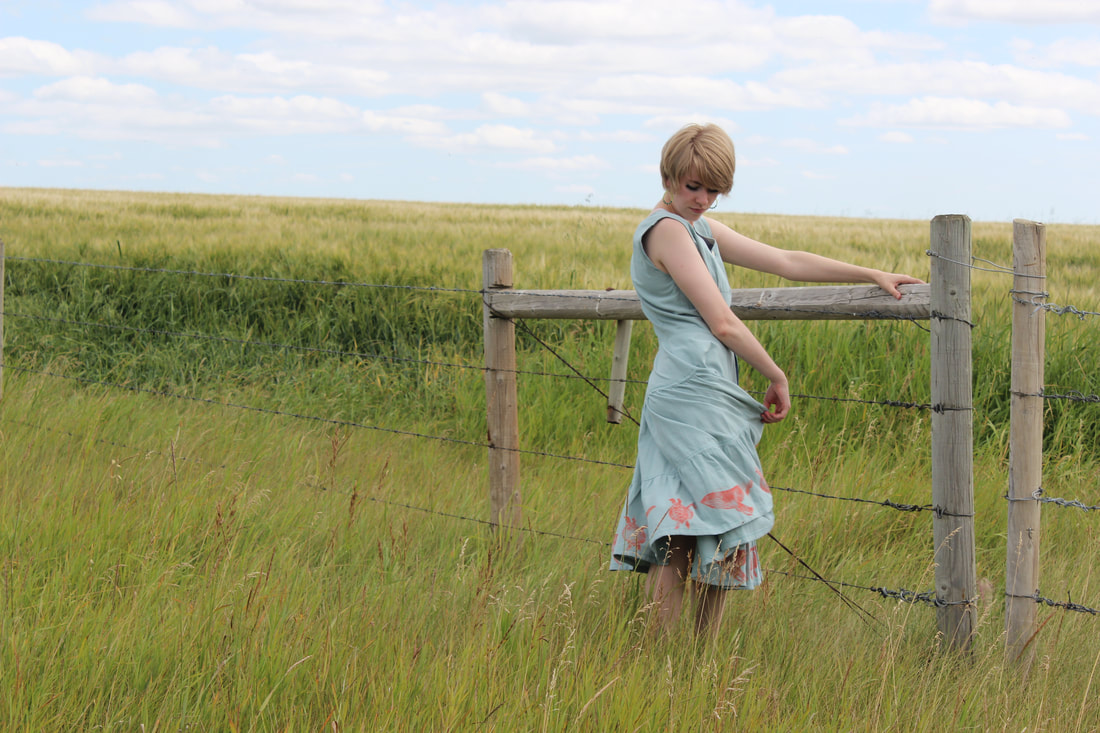
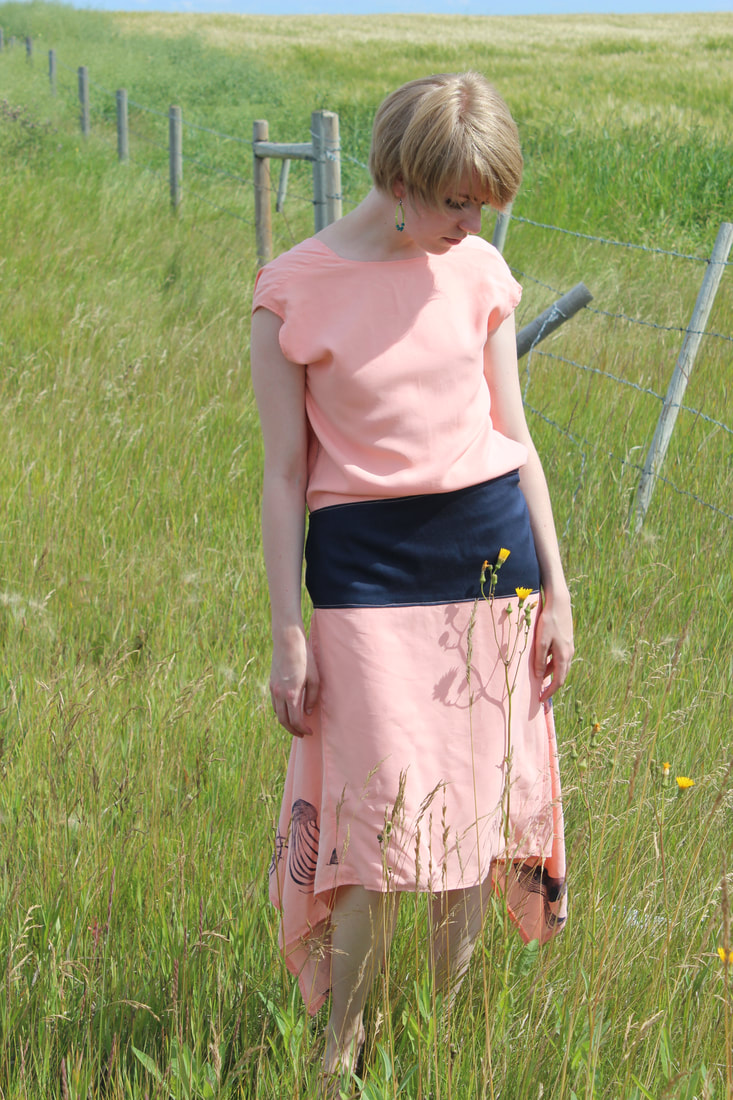
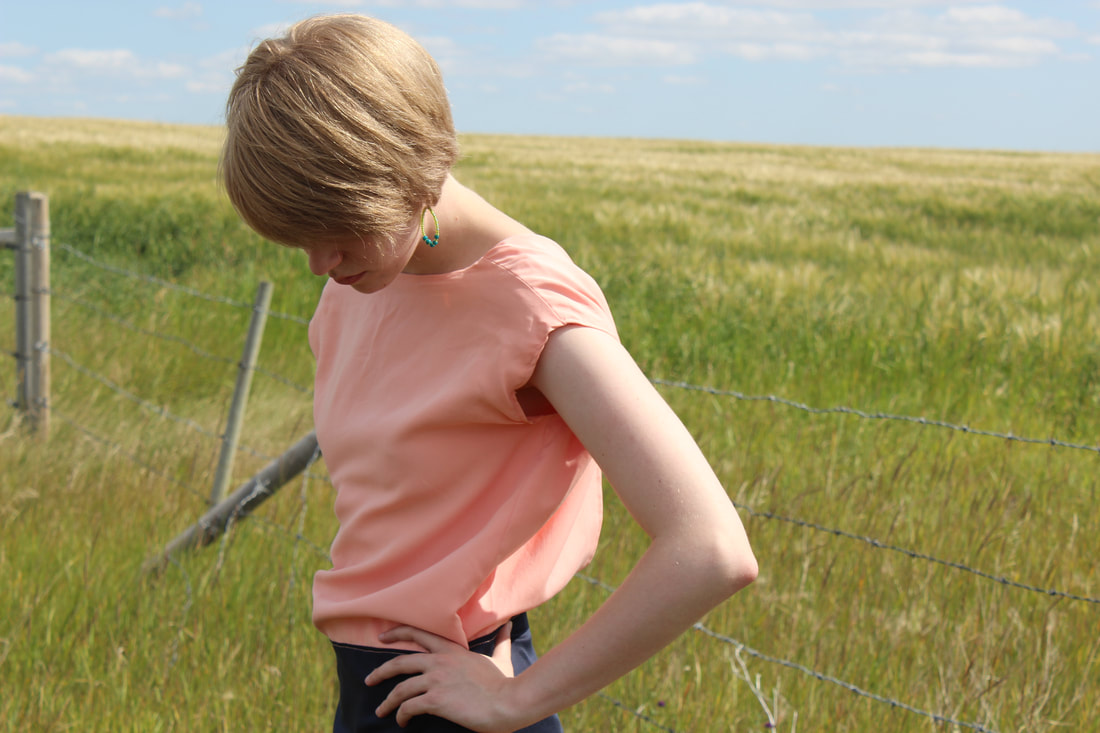
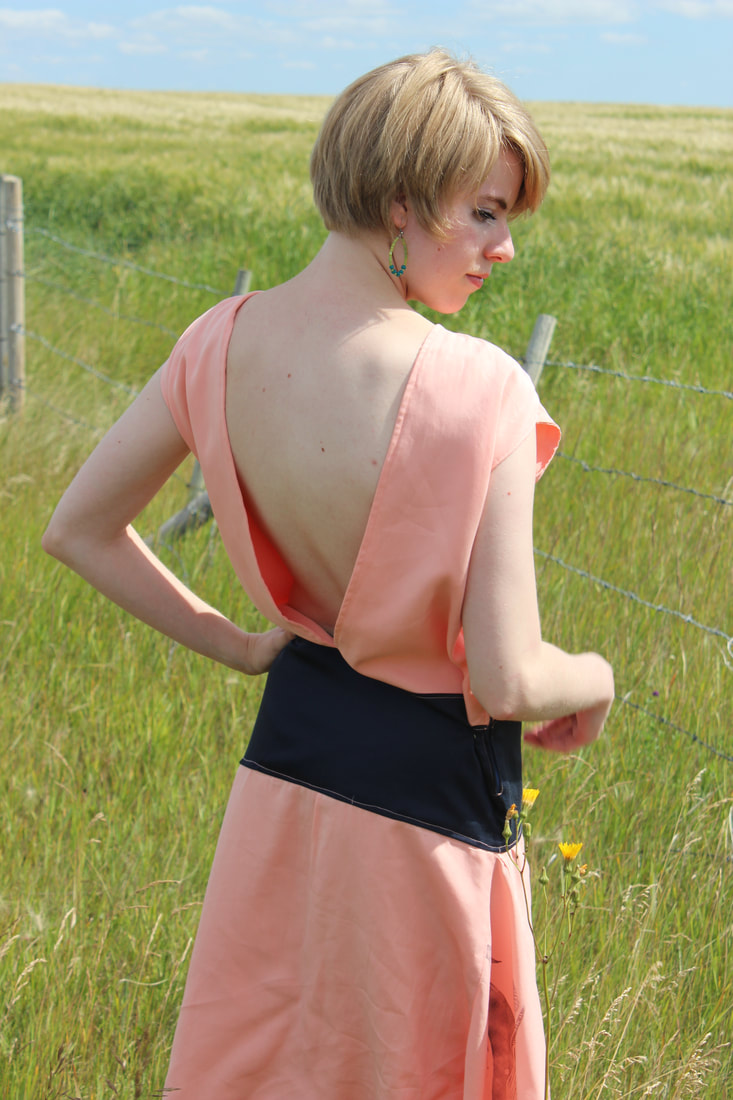
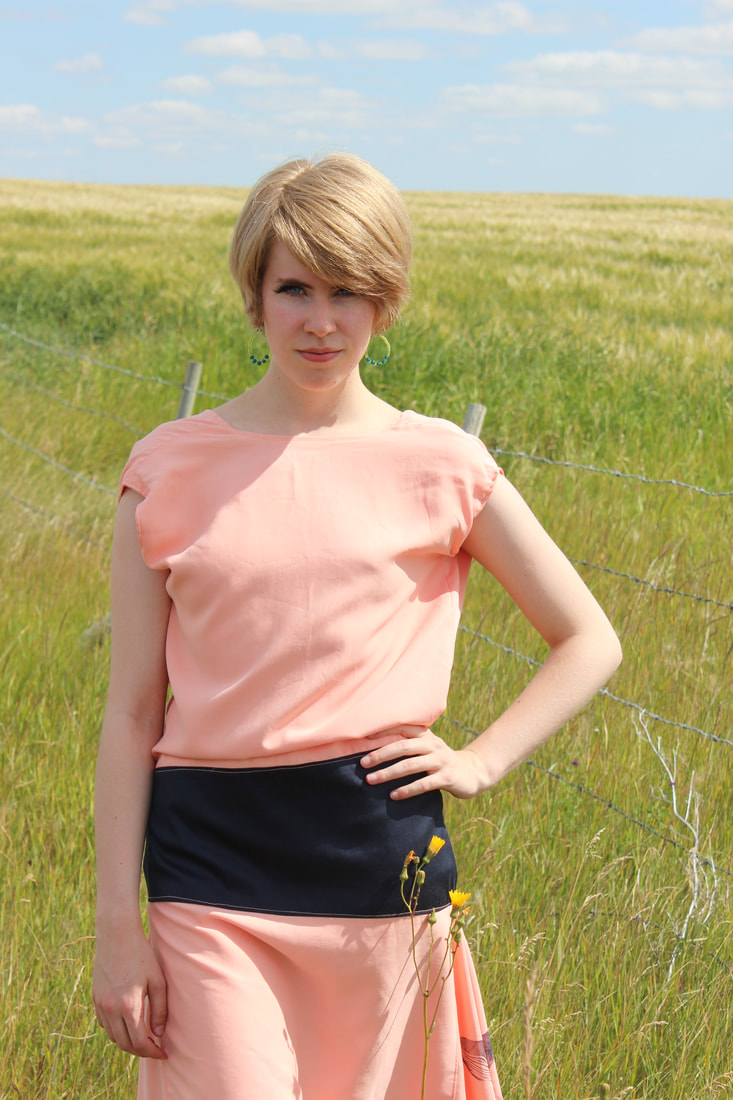
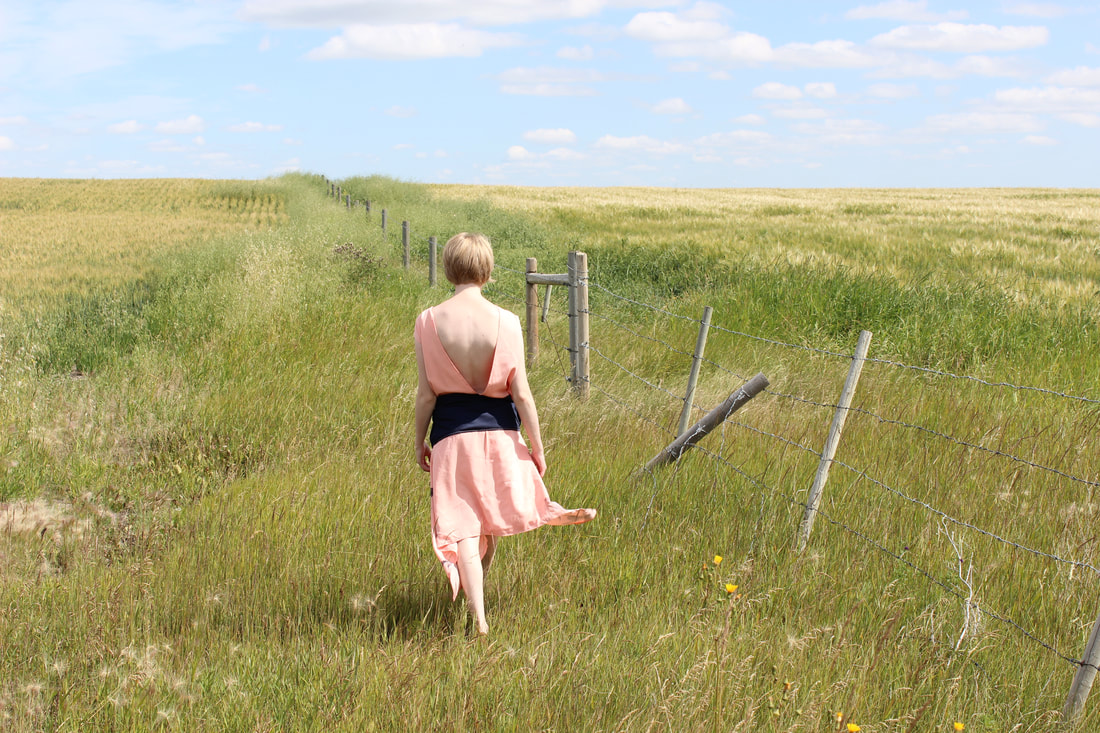
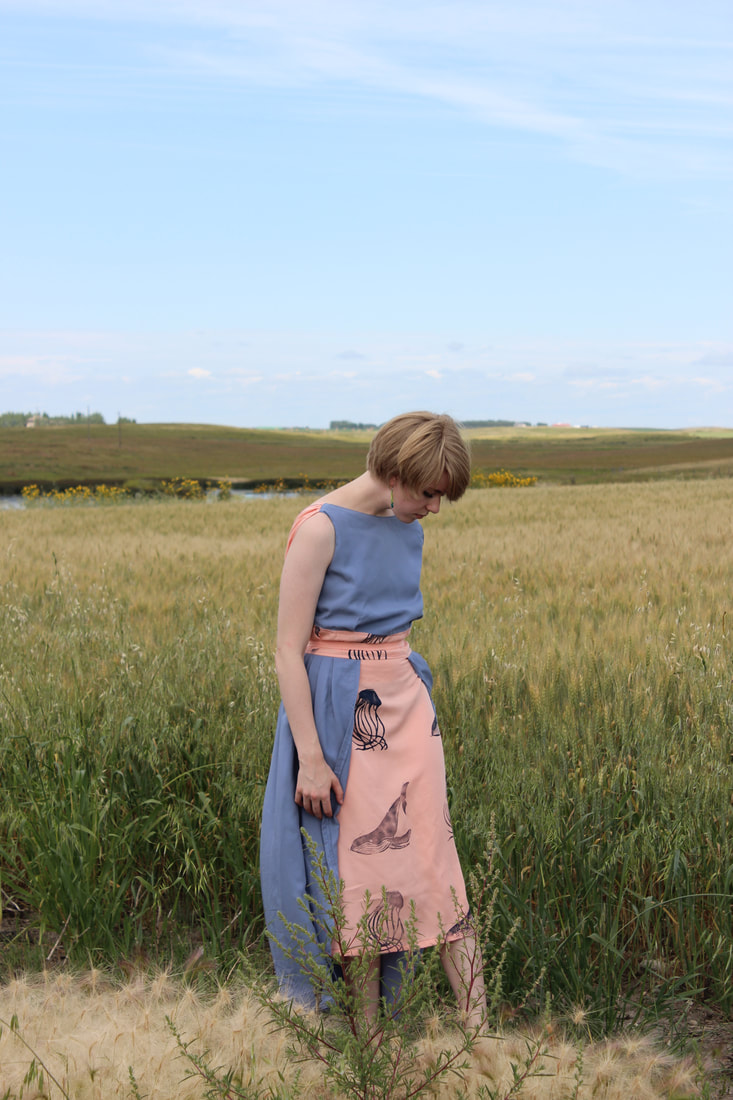
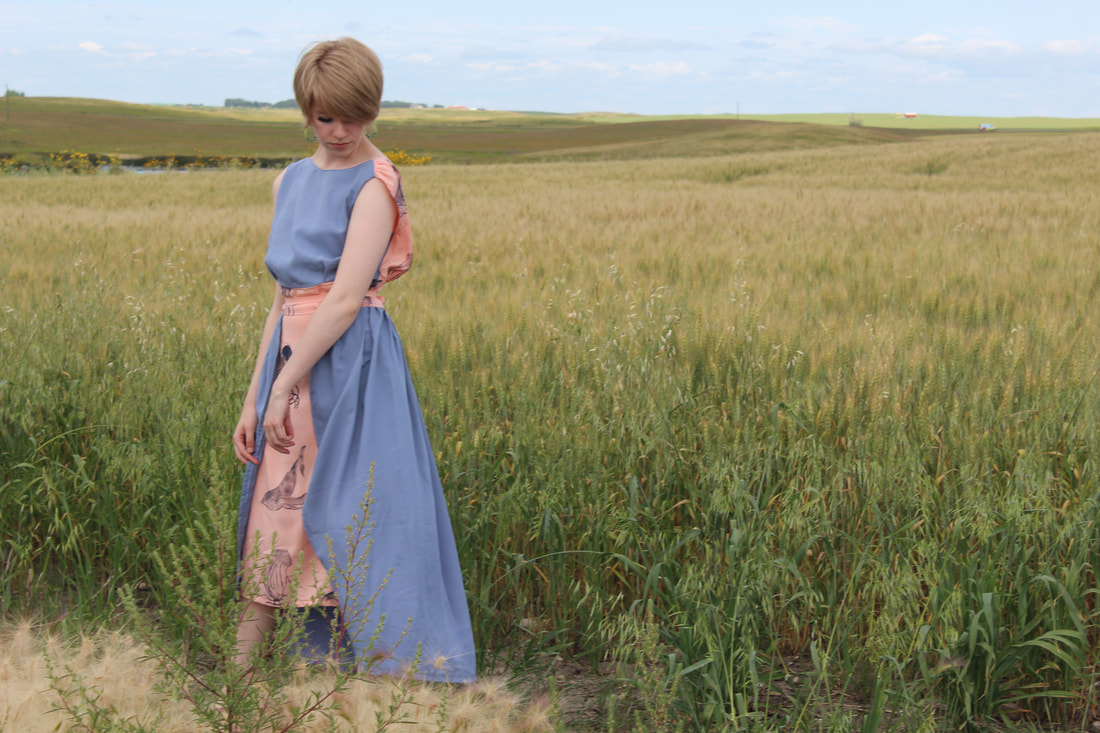
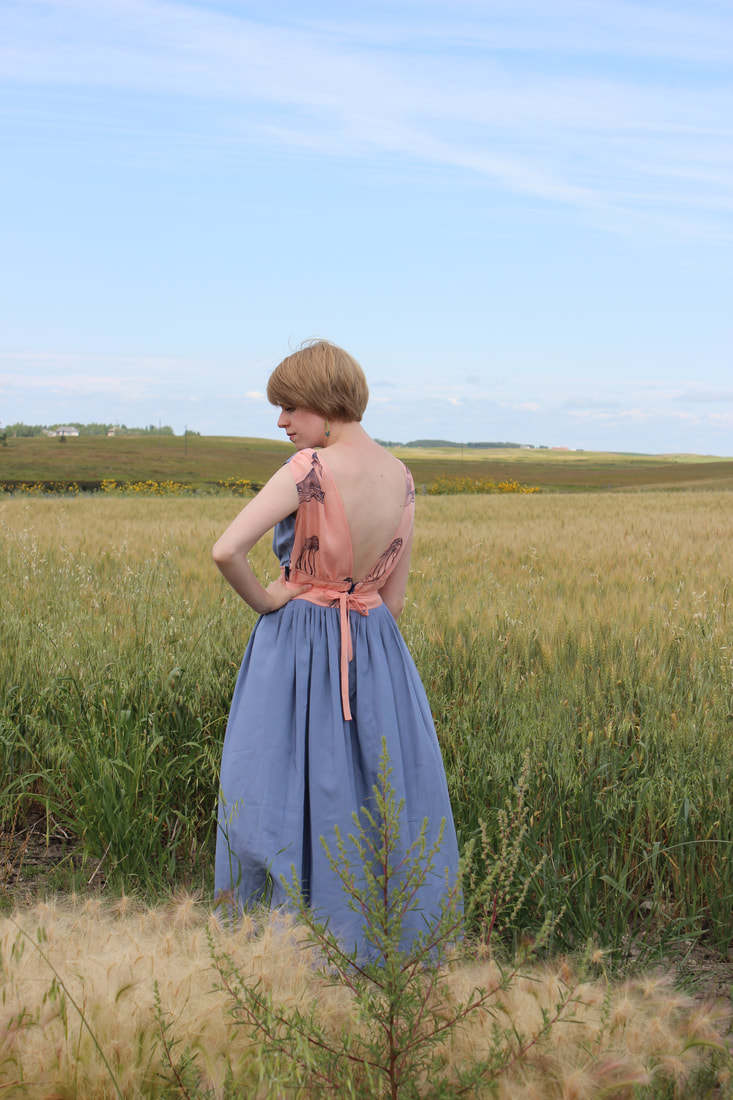
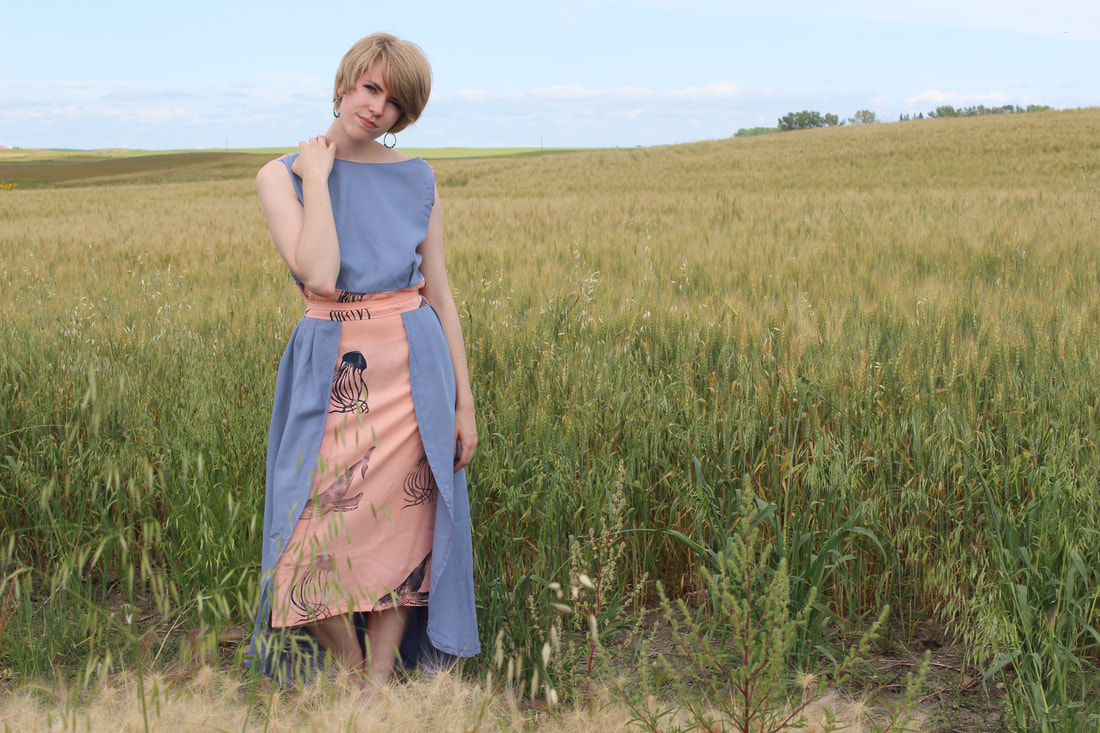
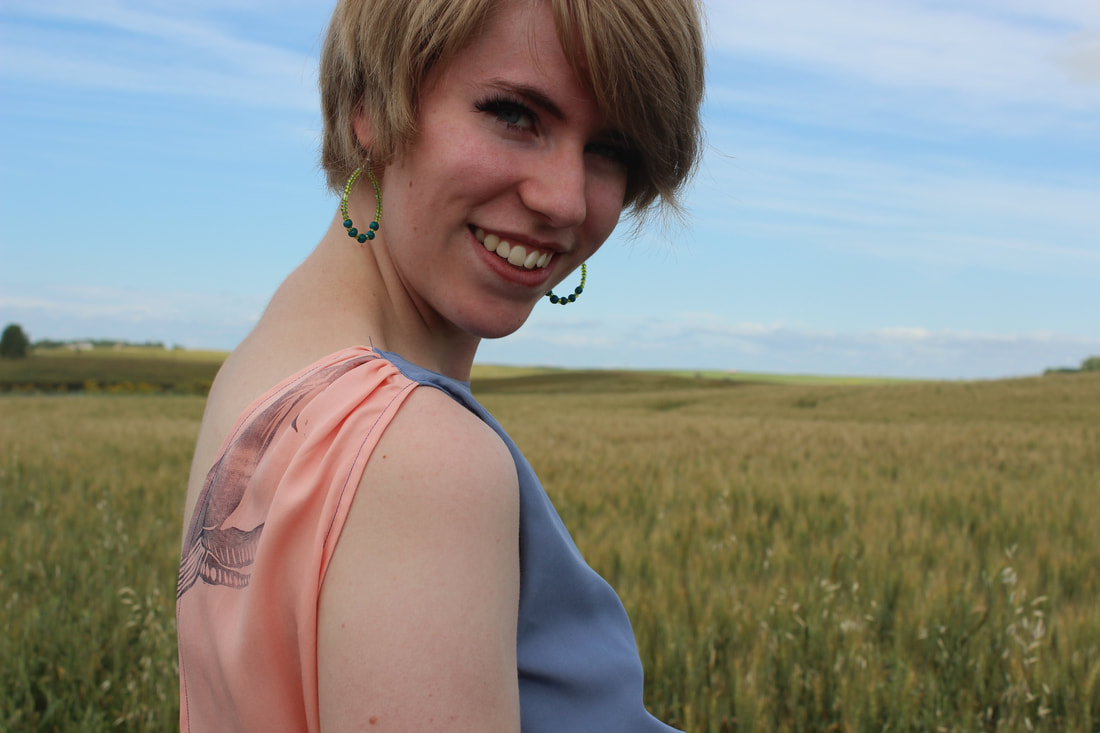
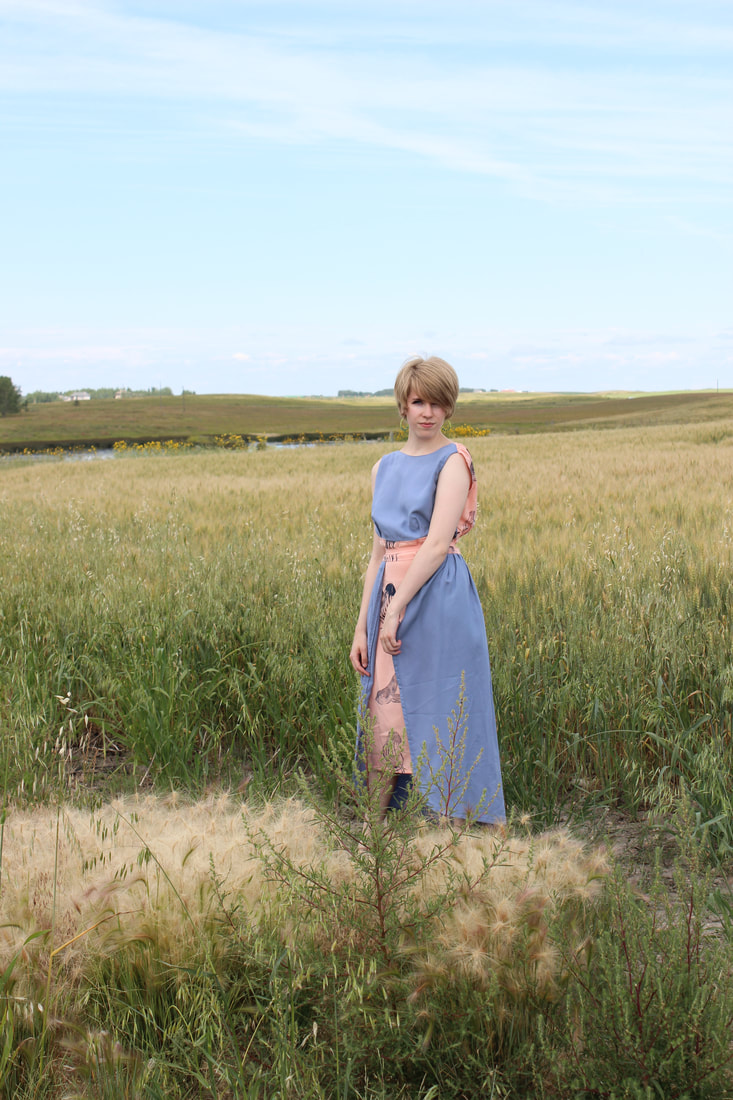
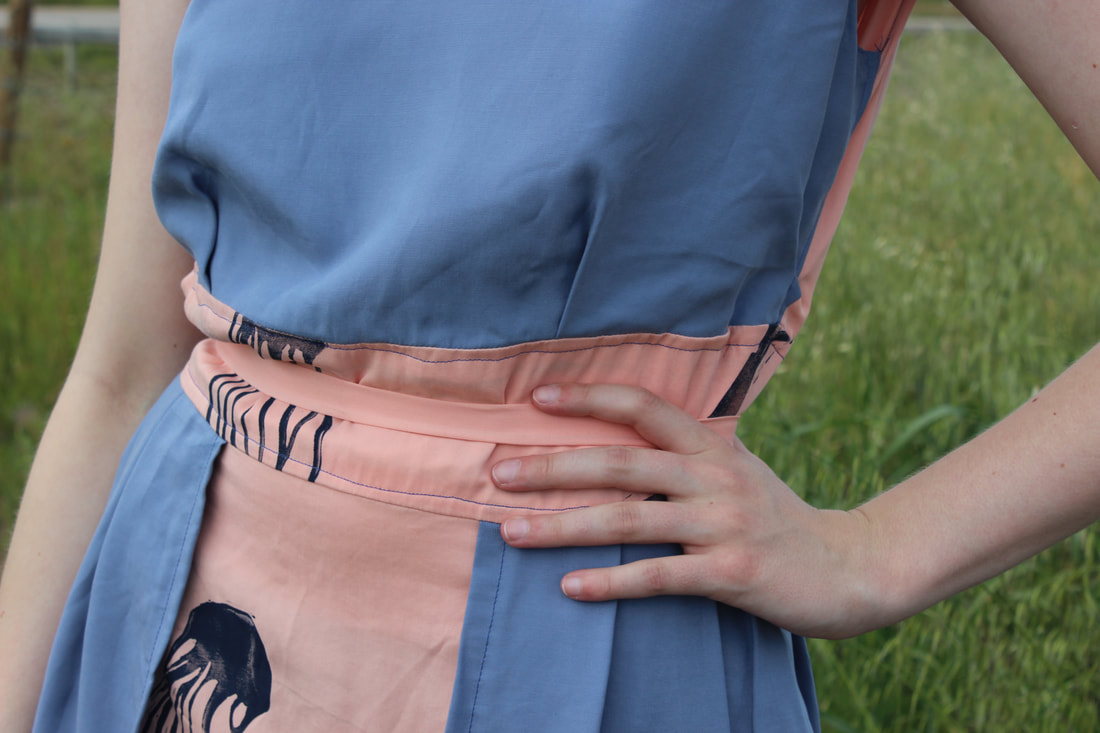
 RSS Feed
RSS Feed
